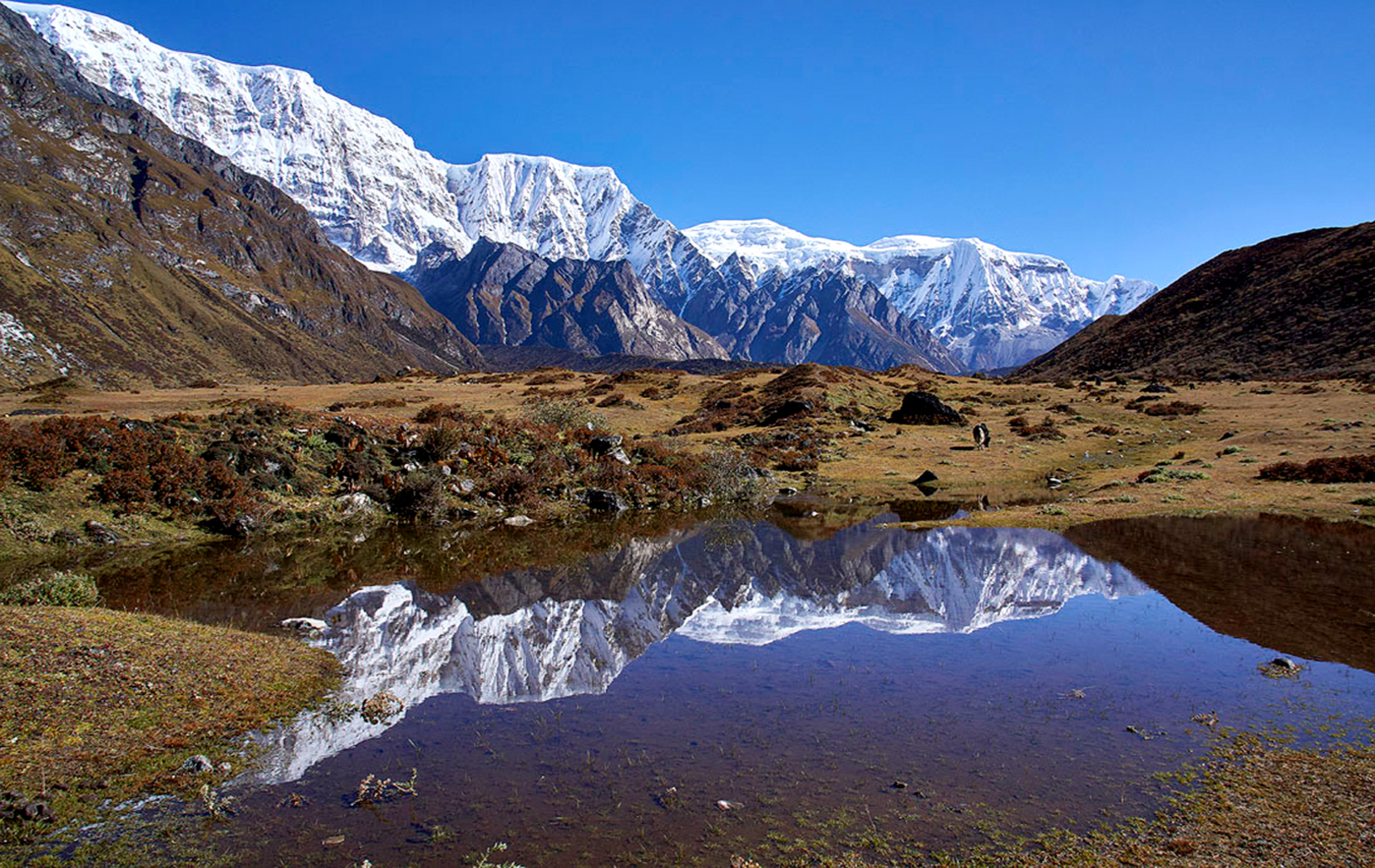

Snow Leopard Jomolhari Trek
Bhutan Jomolhari Trek
-
 14 Days
14 Days
-
Trekking
-
Walking Tours
-
Culture Tours
-
Festival Tours
-
Moderate
Nothing in the world can prepare you for an astounding panorama that awaits you when you embark on a Snow Leopard Jomolhari trek in Bhutan (Jomolhari Loop). Along this trek, you will come upon stretches of spectacular scenery, an unending expanse of fields, green hills filled with flowers, and quiet hamlets below snow-capped peaks.
This is one of Bhutan’s finest short treks that offers spectacular views of 7,314m Jomolhari along with its companions Jitchu Drake and Tserim Kang. These three peaks are highly revered custodians of Bhutan, looming large on the Tibet-Bhutan border, near an ancient trade route from India into Tibet’s Phari Valley. Many consider Jomolhari to be the most beautiful mountain along the entire stretch of the Himalayas.
This trek has high chances of sighting the blue sheep, Takin, and a wide variety of birds. In the spring, rhododendrons, azaleas, and masses of wildflowers carpet the high meadows, while pear and apple trees blossom in the valleys. In the fall, rice paddies ripen to a golden brown, and yak herders bring their charges down from high summer pastures.
Carefully structured, this trip allows for ample acclimatization time, giving you the opportunity to discover the highlights of Punakha-Wangdue and the Thimphu valley. Moreover, it incorporates enriching day hikes before the trek, further enhancing your preparation. Notably, the iconic Taktsang hike is reserved for the final leg of your journey, providing a memorable conclusion to your adventure.
Snow Leopard Jomolhari Trek Outline Itinerary
Day 1: Arrive in Paro
Day 2 & 3: Punakha & Wangdue Valley with hikes
Day 4: Hiking to Lungchuzekha & Trashigang -Thimphu
Day 5: Thimphu Valley Tour
Day 6: Drive to Paro – Shana – begin trek to Thongdu Zam
Day 7: Trek to Soi Thangthanka
Day 8: Trek to Jangothang ( Jomolhari Base Camp)
Day 9: Rest Day for exploration
Day 10: Trek across Bhontela to Dumzo ( Soi Yaksa)
Day 11: Trek to Thongbu Shong
Day 12: Trek to Shana- Paro
Day 13: In Paro (Taktsang)
Day 14: Departure
Take the trip privately or join-in for small group trips. If you want this trip to be shorter, we can remove some of the tour parts or add more if you have extra time. The dates of the some small group trips are tied into attending festivals / events.
Visit our Bhutan Trekking Page for more details of how treks are done.
Jomolhari, standing at 7,326 meters (24,035 feet) and also spelled Jhomolhari or Chomolhari, is the most sacred mountain of Bhutan, straddling the border between Bhutan and Yadong County in Tibet. Often referred to as the “bride of Kangchenjunga,” Jomolhari translates to “Mountain of the Goddess” in both Tibetan and Bhutanese languages.
Along with Jomolhari, the peaks seen closest on this trek are Jichu Drake and Tsherimgang. Many peaks can be seen in the far distance on clear days, especially from the mountain passes.
- Stunning views of mountains and high peaks such as Jhomolari, Jichu Drake, Tserim Kang and others.
- See Yak herders – opportunity to meet, chat and learn about them
- Trek past azure lakes, cross high passes
- Pristine nature; Alpine valleys, temperate forests, rivers and glaciers
- Wildlife such Blue Sheep, Golden Marmot, migratory birds and may be even the elusive Snow-leopard
- Introduction to Buddhist culture and tradition
- Historical monuments such as Dzongs and monasteries.
Overview
 Accommodation
Best available tourists standard hotels, where available. We update our trekking equipment and gear regularly and so you will receive the best gears.
Accommodation
Best available tourists standard hotels, where available. We update our trekking equipment and gear regularly and so you will receive the best gears. Meal
All meals plus evening tea. All beverages included during the trek.
Meal
All meals plus evening tea. All beverages included during the trek.
 Best Seasons
The ideal seasons for the Jomolhari trek are Spring (late March to May) and Fall (late September to early November), offering the best weather and trekking conditions. In Winter (late November to early March), heavy snow is prevalent, and Summer (June to early September) experiences occasional rain, yet showcases stunning high-altitude blossoms.
Best Seasons
The ideal seasons for the Jomolhari trek are Spring (late March to May) and Fall (late September to early November), offering the best weather and trekking conditions. In Winter (late November to early March), heavy snow is prevalent, and Summer (June to early September) experiences occasional rain, yet showcases stunning high-altitude blossoms.
 Route
Paro - Punakha- Thimphu- Trek to Thongduzam, Soithangthangkha, Jangothang - Dumzo (Yaksa), Thongbu Shong and end trek in Shana - Paro (Takstang hike).
Route
Paro - Punakha- Thimphu- Trek to Thongduzam, Soithangthangkha, Jangothang - Dumzo (Yaksa), Thongbu Shong and end trek in Shana - Paro (Takstang hike).
 Best Months
April, May, October, November
Best Months
April, May, October, November  Good Months
March, September
Good Months
March, September  Lean Months
June, July, August
Lean Months
June, July, August  Not Recommended Months
January, February, December
Not Recommended Months
January, February, December - Stunning views of mountains and high peaks such as Jhomolari, Jichu Drake, Tserim Kang and others.
- See Yak herders – opportunity to meet, chat and learn about them
- Trek past azure lakes, cross high passes
- Pristine nature; Alpine valleys, temperate forests, rivers and glaciers
- Wildlife such Blue Sheep, Golden Marmot, migratory birds and may be even the elusive Snow-leopard
- Introduction to Buddhist culture and tradition
- Historical monuments such as Dzongs and monasteries.
Cost Information
Cost is based on the number of participants and travel dates. Cost varies from $3300 to 5550 per person including SDF. Contact us for details.
Included
- Accommodations in hotels as listed during the tour and in tents during the trek
- All meals
- All transfers
- Sightseeing with entrance fees.
- English Speaking Wind Horse Local Tour Leader.
- Bhutan visa including visa fees.
- SDF (Sustainable Dev. Fees)
- During the trek: Fully organized trek with all meals, and beverages. All trekking gears including Tents, Thermal mats, Blow pillow, Hot-water bag for warmth during night. Portable Altitude chambers Bag for emergencies. Pack animals to carry luggage and additional riding pony for emergency, Basic Medical Kit. Trekking staffs include first aid trained Guide, Cook, assistants and horseman.
Suggest bring your sleeping bag but if needed can be borrowed ! (cleaning charges will apply)
Borrow for free; trekking poles, water bottle, rain poncho, duffel bag
Not included
- Flights in and out of Bhutan purchased separately. Check our website for Druk Air fares.
- Travel/Medical and evacuation Insurance – purchased separately
- Personal trekking gears such Day pack, clothing, shoes etc.
- Tips and gratuities (optional)
Detailed Itinerary
Expand AllArrive in Paro
Upon arrival, you will meet your guide. In the afternoon, embark on a brief exploration of the tranquil Paro valley. This tour includes a visit to Rinphung Dzong, a leisurely walk through the Farmer’s Market, a delightful stroll through the town’s charming streets, and, if time allows, a visit to Dumtseg Lhakhang temple to admire its ancient murals.
If your flights arrive early, we will also include a visit to National Museum.


 Altitude:
2200m
Altitude:
2200m
Punakha & Wangdue Valley
Embark on an eastward journey, traversing the spectacular Dochula Pass (3100m) as you make your way to the semi-tropical Punakha-Wangdue valley. Pause at Dochula Pass to savor the breathtaking mountain panorama before descending approximately 1700m (5,500ft) during a scenic two-hour drive to reach Punakha valley.
Following a lunch, the exploration continues with a visit to Wangdue Phrodrang, an immersive experience in Richengang village, and a leisurely stroll to Chimi Lhakhang temple—a tribute to Bhutan’s renowned Saint Drukpa Kuenley.
The ensuing day presents serene hiking experiences, including a journey to Khamsum Yuelley Chorten. Explore the remarkable Punakha Dzong, an architectural masterpiece gracefully nestled at the confluence of two rivers. Should there be no scheduled events, you might also enjoy further hiking opportunities.



 Altitude:
1300m in Punakha Valley
Altitude:
1300m in Punakha Valley
Hiking to Lungchuzekha
Departing from Punakha, we retrace our steps along the scenic drive to Dochula Pass. This return journey offers another opportunity to admire Bhutan’s majestic snow-capped peaks, forming the natural border with the Tibetan Plateau.
After relishing the panoramic views at Dochula, we embark on a 2-hour gradual walk uphill to the Lungchuzekha Temple & Retreat center. The trail winds through lush vegetation of moss-covered birch, hemlock, and rhododendron trees, offering splendid vistas of peaks and valleys. Adopted by Wind Horse since 2011, our guides meticulously maintain this trail. A delightful picnic lunch awaits at the monastery (3550m).
Instead of returning to Dochula, we opt for a 1-hour gradual downhill path to another mountain-top retreat and the monastic center of Trashigang Goempa (3150m). There, we meet our vehicle and drive to Thimphu.
In Thimphu, our journey continues with a visit to the majestic Tashichho Dzong. Following that, we proceed to the bustling Farmer’s Market and take a leisurely stroll through the city center, passing Changlimithang grounds, where you’ll have the chance to witness an archery match.



 Altitude:
Lungchutse 3550m
Altitude:
Lungchutse 3550m
 Duration:
2+hrs drive & 3-4hrs walk
Duration:
2+hrs drive & 3-4hrs walk
Thimphu Valley Tour
Nestled in a valley at an altitude of 2,300m, Bhutan’s picturesque capital offers a wealth of experiences. On days without scheduled events, we embark on a full-day tour that encompasses Thimphu’s highlights.
Our itinerary includes a visit to the Giant Buddha statue, followed by a scenic walk lasting over an hour along a picturesque path that offers stunning views of Thimphu, concluding at Changangkha Temple. After exploring this temple, we briefly pause at the Takin Preserve to catch a glimpse of Bhutan’s National animal.
Our journey continues with a visit to Zilukha Nunnery, the Institute of Zorigchusum (often referred to as the painting school), and the Textile Museum. As the day progresses, we take a leisurely stroll through the vibrant Craft Market streets. Towards evening, we pay homage to the memorial Chorten, a poignant and spiritual conclusion to our exploration.



Drive to Paro - Shana - begin trek to Thongdu Zam
From Thimphu, we will drive to Paro and continue north until we reach Drugyal Dzong. We will briefly stop to view the Drugyal Dzong fortress, which is currently being rebuilt. Following this, we will continue our journey for another hour or so along a dirt road, passing through farmlands adorned with traditional stone houses until we reach Shana Zam at an elevation of 2850 meters. Along the way, we will also be treated to our first views of the majestic summit of Jomolhari. (Total 3hrs drive)
Meet your trekking crew, including the horseman, cook, and assistants, and hand over your luggage for the trek. We will then commence our trek, which is expected to last between 3 to 4 hours. We will gradually ascend the valley, following the bends of the Pachu river as we venture deep into Jigme Dorji Wangchuk National Park. Our destination for the day is a small clearing called Thongduzam, situated at an altitude of 3150 meters. Despite its brevity, today’s trek offers enchanting views and takes approximately 4 hours to complete.
Start trek at 2850m, Camp Thongduzam at 3150m. Approx. 8km/3-4hrs trek.



 Altitude:
Start trek 2850m and Camp Thongduzam 3150m
Altitude:
Start trek 2850m and Camp Thongduzam 3150m
 Duration:
Approx. 8km. 3-4hrs trek
Duration:
Approx. 8km. 3-4hrs trek
 Overnight in tent camp
Overnight in tent camp
Trek to Soi Thangthanka
Continue up following Paro river upstream, deep into the National Park, which is the largest protected area in the country with approx. 4300sqm km spanning in three climate zones ranging in elevation from 1400m to 7000m. The thick forests of oaks, maple, birch, larch, alders and pine make way for rhododendron, spruce and conifers and pines as we trek higher. The valley narrows as the trail leads higher, winding up and down, as we get closer to our camp , which is also another clearing in the forests.
Approx. 500m ascent / 50m descent. Camp at 3600m 10km/4-6 hours trek



 Altitude:
Camp at 3600m
Altitude:
Camp at 3600m
 Duration:
Approx. 9-10km -4-6 hours trek
Duration:
Approx. 9-10km -4-6 hours trek
 Overnight in tent camp
Overnight in tent camp
Trek to Jangothang ( Jomolhari Base Camp)
Continue following Paro river as the valley begins to widen, opening to a spectacular alpine area surrounded by high ridges and snow-capped peaks. A few yak-herding villages are based in this area. By now we are above the tree-line, with low tundra of juniper and rhododendron setosum, while blue sheep have also been spotted in the higher rocky outcrops. Due to altitude gain, the pace is typically slower. Our camp is below a ruined fortress with Mt. Jhomolhari in the backdrop, which now seem nearby.
Approx. 500 ascent/50m descent. Camp at 4080m. 14km/5-6hr trek



 Altitude:
Jangothang Base camp-4080m
Altitude:
Jangothang Base camp-4080m
 Duration:
Approx. 14km/5-6hr trek
Duration:
Approx. 14km/5-6hr trek
 Overnight in tent camp.
Overnight in tent camp.
Rest Day or Explore
Jangothang is one of the most spectacular camping places in the entire Himalayas. You may wish to rest and enjoy views from your campsite or walk up the small valley towards Jomolhari that takes us to a dramatic viewpoint towards the glacier and imposing face of this 7000m mountain. Alternatively you rest or visit the nearby village.



 Overnight in tent camp
Overnight in tent camp
Trek across Bhontela to Dumzo ( Soi Yaksa)
The trek becomes more challenging from this point. The trail commences with a steep ascent to Tshopu lakes, followed by a gradual climb up to Bhonte La pass (4,890m). In this vicinity, frequent sightings of blue sheep, chubby marmots, and migrating Himalayan birds are common, accompanied by breathtaking vistas of Jichu Drake and Tserim Kang peaks, along the flank of Jhomolhari. After crossing the pass, the path leads to a steep descent downhill, ultimately reaching the quaint yak-herding village of Soi Yaksa. The day concludes with setting up camp near Dumzo.
Approx. 810m ascent/ 1090m Descent. Camp at 3800m. About 16km -7 hours trek
Bhonte La Pass 4890m (highest on this trek)



 Altitude:
Dumzo Camp 3800m, Bhonte La Pass 4890m
Altitude:
Dumzo Camp 3800m, Bhonte La Pass 4890m
 Duration:
16km -7 hours trek
Duration:
16km -7 hours trek
 Camping Tent.
Camping Tent.
Trek to Thongbu Shong
Our hike starts with a gentle uphill trail to the top of the eastern ridge of the Soi Yaksa valley. From here, enjoy an incredible view of the amphitheater of mountains to the north and to the west. Cross Takhungla (4,520m), and descend to our camp site in a wide grassy pastures by the valley.
Approx. 720m Ascent/ 340m descent. cross TakhungLa Pass at 4520m. Camp: 4180m. 12km/6hrs trek.
You will cross TakhungLa Pass ( 4520 m)



 Altitude:
Cross Takhungla pass 4,520m, Camp Thongbu Shong - 4180m
Altitude:
Cross Takhungla pass 4,520m, Camp Thongbu Shong - 4180m
 Duration:
Approx. 11km -5-6 hrs trek
Duration:
Approx. 11km -5-6 hrs trek
 Overnight in tent camp
Overnight in tent camp
Trek to Shana- Paro
Ascending briefly but steeply from the campsite, we depart the remote mountain terrain and follow the ridge towards Thombu La (4,380m). From this elevated vantage, the Paro valley unfurls to the south, while mountain vistas surround us in every direction. As we initiate a steep descent, we rejoin the route leading back to Shana, where our trek initially commenced.
Ascend 200m to Thombu la ridge 4380m and descend to Shana at 2850 in 5-6hhrs trek
After bidding farewell to our trekking crew, we’ll meet our awaiting vehicle and embark on a scenic hour-long drive along the farm road, arriving at our comfortable hotel in Paro in the evening.
Another mountain Pass to cross - Thombu La pass 4380 m



 Altitude:
Cross Thombu la ridge 4380m
Altitude:
Cross Thombu la ridge 4380m
 Duration:
5 hours Trek
Duration:
5 hours Trek
In Paro (Taktsang)
On your final day in Bhutan, embark on a hike to the iconic Taktsang (Tiger’s Nest) Monastery—an essential and quintessential Bhutanese travel experience. Having explored numerous areas on foot throughout your journey, we aspire to take you beyond Taktsang. This includes visiting more remote monasteries further uphill, such as Zangdopelri and Ugyen Tshemo, along with a walk to the uncharted side of Taktsang that remains inaccessible from the main site. This comprehensive full-day hike promises an immersive adventure.
Upon returning to Paro, you’ll have the opportunity for a final leisurely stroll. As the day draws to a close, we gather for a farewell dinner and spend the night in Paro, marking the end of your unforgettable Bhutanese expedition.



 Altitude:
Taktsang Monastery - 3120m
Altitude:
Taktsang Monastery - 3120m
 Duration:
5-6hrs hike
Duration:
5-6hrs hike
Departure
After breakfast, transfer to Paro airport in time for your departure flight.
In case your flight is in the afternoon, we can make use of the morning hours by exploring more of the Paro valley.

Group Travel Dates
Traveller Review
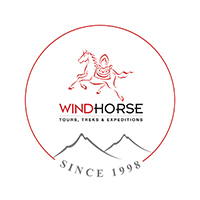
Caroline (Washington, DC, USA )
Oct 05 -18,2019I apologize for the late reply but coming back home after many days implied a lot of things to be done so I was extremely busy. I was ( and am..) really enthusiastic about my trip because I discovered an incredible country so rich in nature and culture as very few other ones I ever visited. As I told you I was definitely not happy with the hotel in Punakha which was less than a second choice but for one night it was ok. Also chuumey was not so impressive but the place itself was very nice. All the other ones were good Running from the ( obvious…) excellence of Naksel to the fantastic location and structure of Gangtey palace and so on, but what was really fascinating and lovable was the friendliness and the attention in service which I noticed and remarked in everybody . From the staff in each place : this is something I didn’t find very often in my travels. As for Tashi and Fren they were extremely nice and friendly , helpful and always trying to help in solving little problems and inconveniences which might occur. I would definitely recommend both of them for future customers.
It’s really a pity that the country is not so popular for tourism (Many friends asked me WHERE was Bhutan…) even if for me it was great like that since I hate big tourist groups… But for the country in itself I think you should try to make it more popular as a destination because more people should be able to enjoy its treasures…
For my part I will try to encourage people to go there !

Marco (, Netherland )
15 -26 Oct, 2018Hi Anand!
I hope the tipping issue went ok…if anything, I tipped high…but for great service, so ok with me.
The trip went very well, from my perspective. I was so excited to cross that high pass! I don’t know if you heard about the eldest queen mother visit in the monastery. She said it was “auspicious” that no one else signed up for the tour, and she turned out to be right. I had trouble on parts of the descents—(a) I HATE exposure and (b) trail rocky, scree, “kneebanger,” slippery that I needed to do slowly to protect knees and out of fear I’d slip & injure myself. Pema galantly helped out e.g., on big, difficult steps, holding my hand so I could put weight on his hand and ease myself down. The last day it took me 6 hours to do the 5,000’ descent. I felt bad that extra 2 hours ate into the crews’ free afternoon and probably drove Pema and Dechen nuts. But anyway I made it. The crew was very solicitous of my every need on the trek. They couldn’t have been nicer. They even let me eat in the warm kitchen tent—the dining tent was too cold.
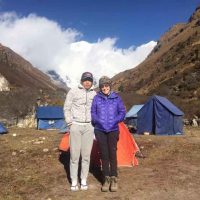
Marcie Kaplan (Arlington, Massachusetts. USA , USA )
07 -20,Oct,2018Our journey in the mountains of Bhutan was richly rewarding. A gift not wrapped in paper but bound instead in the thread of discovery and the characters we were blessed to encounter along the way. A journey of reflection and life in focus – so generously mentored by the welcoming will and inspiring talents of the Bhutanese people, Like our fabulous guides Yonten and Pema, who helped us climb higher..beyond….as each new step took our breath further away. Thank you! And also thank you to all our amazing crew and the nine ponies … especially camera pony!
Everyone we encountered helped make our expedition an experience that will long be remembered as an outstanding example of living in the moment.. Thanks to Bas at Kimkim for making the arrangements so easy and to Wind Horse for organising everything on the ground. Thoroughly enjoyed this Bhut-Camp!

Mark Russel Fitzsimmons (, Australia )
Jan 30 - Feb 08, 2018A little late to responding to this but just wanted to say that the trip was fabulously planned and organised. From the beginning, we were set up with the packing list, the itinerary etc. Pema was an amazing guide – always happy to answer our questions and support us through the toughest parts of the hike. The rest of the crew was also incredible – so SO helpful.
The food was fantastic and all of the camping gear was excellent.
Thanks for such a great adventure!
TID 8990

Elizabeth M Sullivan (, USA)
Sept 27 -Oct 10,2017Of course see’ing the snow leopard was the highlight! Pema, our guide, added to the experience with his amiable personality and amusing stories.
If I had to give constructive criticism, I would say the food could have been more interesting at the Thimphu Hotel Restaurant, named Swiss Restaurant. My modest dissatisfaction with food could also have been because I never had Swiss food before. 😛

Roberto Nicholo (, USA )
Sept 27 -Oct 10, 2017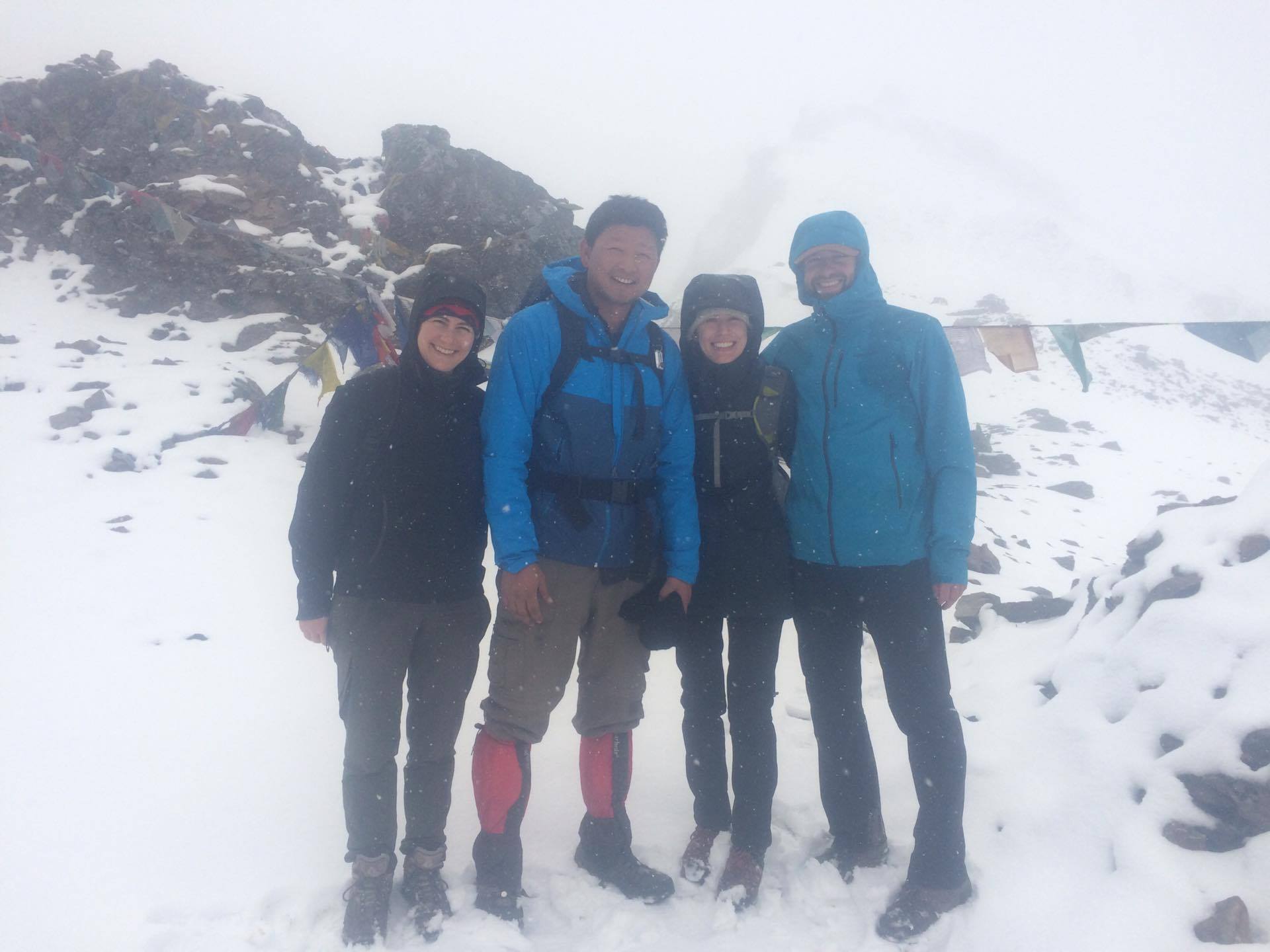
Hi Anand – Thanks for reaching out! Overall we were overwhelmingly pleased with our experience with Windhorse. Our tour with Yonten was seamless. From the time we were picked up at the airport, to changing our trekking itinerary after our biggest hiking day, to finding us great pizza, then finally dropping us off at the airport – the experience was wonderful.
Yonten was very accommodating. We came in wanting to find our Uncle’s tsa-tsas in one of the caves on the way up to Tiger’s Nest so after 7 days in the mountains we asked Yonten to take us up to Tiger’s Nest before the crowds at 6am to avoid the crowds so we could have a quiet moment and hopefully a better chance of finding his ashes. Everything worked out perfectly and Yonten was really committed to making sure we found what we were looking for. We feel like we were really well paired with our guide.
The trekking experience was above and beyond what we expected. The team was on top of snacks, meals, our tents, hot water bottles – everything that made being in the mountains a lot more comfortable than we’re all used to. After our toughest trekking day we realized we probably we’re up to have another day of really tough trekking after it (which was on our schedule) and Yonten worked with the trekking team to make sure we had options that we were happy with.
We can’t thank you enough. Our trip to Bhutan was incredibly special for a number of reasons and I’m sure we’ll be back. Windhorse gave us a fantastic introduction to Bhutan – Yonten in particular.
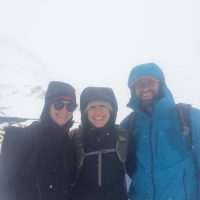
Amanda Burke Livingstone (Mill Valley, California , USA )
May 22- June 03,2017June 7, 2017
The lure to travel to and experience Bhutan began more than 20 years ago when its relative isolation lent it an “other-worldly Last Shangri-la” sheen. Over the years, the call became even more pronounced as Druk Yul (a.k.a the Land of the ThunderDragon) adopted the seemingly abstract vision of measuring Gross DomesticHappiness versus Gross Domestic Product to gauge its economic development and the quality of life of its people. More recently, Bhutan’s Constitution which mandates that it maintain no less than 60% forest cover, makes it a carbon negative country. At present, Bhutan’s forest cover which approximates 72% has added to its allure. These and the quiet gentleness of the country and its people pulled at my heartstrings.
Three themes/activities shaped my travel plans. First, I wanted to see and experience two or more spring Tsechus/religious festivals. Second, a 6-8 day trek that would skirt aglacial lake and a high pass or two was on tap. Lastly, a more immersive and interactive cultural journey in the countryside would cap my 26-day sojourn inBhutan.
Getting these plans in place was a challenge. No international tour or adventure operator was able to easily put together an itinerary that met my expectations and/or requirements. The reason being, international tour operators are required to use or work with Bhutanese tour operators when arranging tours within Bhutan making international operators largely dependent on local operators. Hence, while trolling the Internet and looking for alternatives, I chanced upon Wind HorseTours, Treks and Expeditions (https://www.windhorsetours.com/), a Bhutanese tour operator whose head office is in Minneapolis, MN. With WindHorse Tours I was able to make my travel arrangements with ease and confidence. In addition, having a U.S.-based office simplified matters considerably.
Ugen Tschering, operating out of Minneapolis, was most patient, helpful and instructive in guiding my travel plans. In particular, Ugen customized the third leg of my trip and put together a wonderful mix of home stays, day hikes, a day and a half on horseback, visits to dzongs, monasteries, a nunnery, museums, drives through the countryside and village walk-abouts. Jambay Dorji’s logistical support, follow-throughs and quick responses (from Thimpu) to my many questions gave me the comfort and assurance that all was inorder. Both gentlemen were friendly, warm, professional, and efficient in their dealings with me. I trusted their wisdom and advice wholeheartedly.
I flew into Paro from Bangkok and upon meeting Pema, our Chief Guide (who would also lead our Jhomolhari trek), Gudu (our amicable and smooth-steering driver) and Tshering (a most helpful, smiling guide-in-training) it quickly became apparent that we were in the best of hands. Pema is a seasoned guide. He was attentive, sensitive to the needs of everyone in our group and readily introduced us to Bhutanese culture, cuisine, folklore and humour. Moreover, his deep knowledge and understanding of Vajrayana (tantric)Buddhism was enlightening. Pema also made sure we got the most out of the Talo and Paro Tsechu festivals we attended.
Half of our group departed after the first week and three of us stayed on to do the seven-day Jhomolhari trek. Our crew was made up of Pema (Chief Guide), Tshering (Assistant Guide), Kelten (Chief Cook), Yeshey (Assistant Cook), 2 horsemen, 7 or more horses, a donkey and a mule. We started at Shana Zam (altitude 2850 metres/~9350feet) and over 3 days we wound our way through a valley, crossed the Paro rivera number of times and hiked through forests treed with cider, juniper, pine and oak. On the third day we reached Jangothang Base Camp, (altitude 4080 metres/~13386feet) where the sunrise view of Jomolhari in the distance was breathtaking! The next day being a rest day, Tshering and I, with more gumption than direction,clambered over boulders and scree to reach a glacier fed lake to the east of the camp.
Were it not for Pema’s solicitousness, patience and excellent pacing of our ascents and the crossings we made over Bhonte La pass (4890 metres/~16043 feet), Takhungla pass(4520 metres/~14829 feet) and Thombu La pass (4380 metres/~14379 feet), I doubt that I would have managed as well as I did. From Thimpu, Jambay called to check on our well-being as he was concerned the inclement weather in Thimphu could delay or affect the rest of our trek. In same fashion, like a concerned son,Tschering kept me good-natured company as we both hummed songs on the 1650metre/~5413 feet descent on the last day of the trek. The happiness and inner peace I felt after coming down the mountain are beyond words. Given the challenges thrown our way, the oneness with nature and the sense of quiet accomplishment made it all the sweeter. To top it all off and to Gudu’s credit, he had at theready tall, cold bottles of golden Red Panda beer (or was it Druk 11000) to wash away our fatigue at the end of the trek.
I will beeternally grateful to Pema, Tshering, Gudu and all who made this trek a fulfilled dream.
Flying to Bumthang a day later, I began the third and last leg of my Bhutan experience. Gaki was my young and sweet lady guide, Tenzin was our cheerful, gallant and able driver, and Pema (not our earlier hiking guide but a different Pema) was our lead horseman and riding guide. Dzongs, Buddhist lakhangs (temples), maroon robed monks, prayer flags, prayer wheels, chili-laced dishes, yaks and yak cheese were a-plenty. However, it was the interaction with the locals that made the trip all the more endearing.
Hiking down from the monastery in Padselling we were led part way by a young lama, his student and 2 dogs. Shortly after they left us, we came to a fork on the trail. Gaki made the right choice and we hiked through the forest, into a valley and open fields. As we climbed over a stile and came off the trail, we spotted a worried Tenzin in his Gho (traditional menswear), walking up the dusty road,umbrella and water bottles in hand, rescue in mind, The sight was priceless! Riding on horseback from Ngalakhang to the village of Nagsphel, Pema was caught in a dilemma as to who to attend to first when we took off on a gallop and the horses had to be reined in. Should he attend to me, the client, first or help Gakiwho was struggling to stay on her horse? I managed to rein in and quiet down my horse so Pema ran off to assist Gaki who had fallen off her horse! In Mesethang,our host, his mother and aunt were most gracious and welcomed us warmly intotheir lodge/farm house. The same warm hospitality was extended us by the family whose home we shared in the village of Nangsphel. In Chumey, while discussing fabric with staff at our lodge, we arranged to buy a couple of yards of locally woven fabric when we returned to Thimpu. We picked up the fabric, and with Gaki’s resourcefulness we found a tailor and got it sewn into my very own Kira(national dress for women in Bhutan) – all in the span of a day!
For all thatI saw, heard, tasted, smelt and experienced in Bhutan, there is Wind Horse Tours to thank in spades!Without the attention, organisation, follow-through and terrific front and back office handlers, guides, drivers and support staff, Bhutan would still be adream.
Namey samey kadrin chhela!
For ever grateful,
Genny
Genevieve H. Plank
Oakville, Ontario, Canada
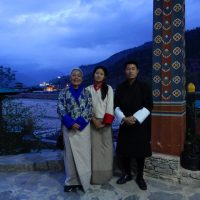
Genevieve (Oakville, Canada)
I -26, April,2017The trip was fantastic. I had a fantastic time. I can’t wait to visit your wonderful country again. As a matter of fact, I have already recommended your company to some friends that want to Bhutan in October. The trek was fantastic, the food was fantastic, the helpers were very attentive and friendly. Tashi my guide was fantastic, provided me with a lot of knowledge about Bhutan and the fauna and flora. Jimmy the driver was wonderful.
If you have any further questions to ask me, please do. I am happy to recommend this company for anybody that wants to visit Bhutan.
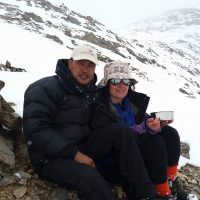
Maria Lopez (, Australia )
April 6 -19,2017Dear Anand
Thank you for you email and sorry for the late answer. But no worries, the trip to Bhutan was just wonderful! I loved especially the trekking although it was quite short, so a good reason to go back in the near future… I loved the campsites and the living in this beautiful area and of course the trekking crew did a superb job! They cooked such delicious food every day and were so friendly and again a big thank you to Minchu, Kinsey, Kinsang and the Hotrseman, which name I forgot (I hope I spelled the others right) but I will always remember his lovely whistling concerts…! Also Pema did a great job and he is a very good guide and just a lovely person and Dawa too, he is a very good driver.
The only things to improve on the trek are already mentioned, especially the mattress was too hard, so it will be appreciated if you replace them. And concerning the program skip the rhododendron festival at the royal botanic garden, that was nothing special and there were even no flowers…
Thank you for all the organization and I wish the whole Windhorse team all the best and will get back to you if I will return to Bhutan in the next years!

Roland H (, Switzerland )
April 16 - 29, 2016.Jomolhari-Snow Leopard Trek – April 2016
Hi Jambay,
I’ve been back for two days now and wanted to write while the impressions are still fresh in my mind. First off, let me say that the communication and client service was excellent. Unfortunately the nature of my work makes longterm planning difficult but you were able to make me a last-minute addition to the trip which I really appreciated. As for the trip it itself, it was amazing. Bhutan is a place that delights and challenges the mind, halfway between isolation and invasion – in the form of outside world forcing a way in through tourists (ourselves included) and the internet, media, etc. At the same time, the uniqueness of the culture is very obvious, especially in the more remote parts but even in Thimphu. Like I said, it challenges ones pre-conceptions daily. Pena was an excellent and knowledgeable guide, Dawa a very safe, patient and invariably courteous driver, and the trekking crew were brilliant. Highlights included: archery, Punakha Dzong (being there for the naming of the new prince was a real bonus), Tiger’s Nest (of course) and especially days 3-7 of the trek (from Jomolhari Base Camp on). The scenery was really stunning, but especially from that point forward.
A few suggestions: 1) the trekking tourist organizations might want to pressure the crews putting the power lines in to clean up after themselves. The amount of garbage around campsites and along the trails on the first two days did detract from the experience; 2) The “mattresses” provided were harder than the ground I think! Perhaps recommend people bring their own air mattresses (I wish I had) or upgrade the ones you supply so they both insulate and pad. On the subject of comforts, the camp chairs could also be upgraded, but the mattresses are the real priority.
But those minor quibbles should take nothing away from what was a magnificent experience. Thanks again to the whole team.

Oscar (New Delhi, Canada)
April 16- 29, 2016
Robert (Lucerne, Switzerland)
Oct 22 - Nov 09, 2015Cultural Tour and Snow Leopard Trek.
Hi guys,
I hope all is well with you, and apologies for such long silence. After spending two wonderful weeks in Bhutan, we came back home to a heavy work load, and I just had the chance to put together all my photos from the trip.
I don’t have the emails of our first guide, Tsering, and the hike crew. Can you please forward the link to them as well?
This was the best trip I’ve ever done in my life, and thank you all for such a wonderful experience. I have been in touch with the wildlife biologist that we met at Jangothang, and we are planning to work together on a snow leopard project. If all goes well, we might see each other sooner than later, and maybe, I may get a second chance to see the elusive snow leopard. 🙂
And, Duba, I promised you the exact distance and time of all the legs of our hike. Here they are:
Day 1 7.5 km 2:40
Day 2 8.9 km 3:56
Day 3 12.8 km 5:25
Day 4 11.3 km 3:46
Day 5 19.1 km 7:10
Day 6 11.4 km 4:08
Day 7 14.4 km 3:18
This was really a fantastic hike. The only change I could suggest would be to combine the first two days if your customers are fit enough and if you prefer to do this in 6 instead of 7 days. We thought we could handle and enjoy the long and gradual hike up to the second campsite in one day.
I wish you and your families all the best!

Arpat O (, USA)
Sept 27 - Oct11, 2015We have nothing but praise for the way Windhorse organized and handled our two weeks in Bhutan.From the initial planning of our custom itinerary for a group of eight, the visas and airline flights, the hotel reservations, the week of touring and finally the week on the Jhomolhari/Snow Leopard trek; every aspect of our trip was expertly managed by Ugyen in the USA and Jambay in Bhutan.
First and foremost we would like to recognize the excellent guidance of Pema Namgyal who trained our eyes to the majestic beauty of his country. From historical dzongs to spiritual sites, from mountain passes to rhododendrons fields, Pema was always at the ready to clearly explain, to highlight and to advise when necessary. His experience on the trail proved invaluable and his concern for everyone’s safety and well being made for a seamless and rewarding experience.
Over the course of our trip, we had two excellent drivers, Gudud and Baliman (sorry for the spelling of your names) who navigated the challenging roads with a sure hand. And how could we thank enough the friendly and hardy trek staff who became our “family”for a week: our cowboy chef and his assistant who consistently served us hot, healthy and plentiful meals, the always smiling ponies wranglers and our “young ones”, Somten and Kinsan, light footed companions on the trail and the morning “bed tea”providers.
The outstanding event of our first week had to be the festival in Thimpu (Tsechu) with the riot of colorful traditional garments worn by all, the imposing backdrop of the dzong and the spectacular costumes and masks of the dancers. It also led us to experience first hand the friendliness of the Bhutanese people and to appreciate the reverence and respect they hold for their country and their king. We traveled across Dochu-La pass to Punakha and visited its impressive dzong; we also drove to Chele-La pass where we had our first sighting of Jhomolhari and hiked to the Kila Nunnery.
The trek designated by Windhorse as the Snow Leopard trek is in fact the Jhomolhari trek 1. It offers amazing vistas and is somewhat challenging because of the terrain and the elevation gain. Everything was done from the moment we arrived in Bhutan to facilitate and adapt us to the high altitude we would have to manage on the trek i.e. frequent day hikes and a rest day at base camp. The camping equipment provided was adequate and in good standing; we brought our own sleeping bags.
Bhutan is indeed a magical destination and we feel fortunate to have attended one of its main festivals, to have visited its glorious dzongs and experienced the serenity of its mountains. Trust Windhorse to make your visit to this Himalayan kingdom a memorable adventure.

Clementine J (, USA)
Sept 23 - 08 Oct, 2015Snow Leopard Trek with Festival (TID – 8705)
To the entire Windhorse team,
Thank you very much for your fantastic Snow Leopard trek. You lead guide Pema was knowledgeable while taking us through the cultural part of the tour, he kept each and every monastery interesting and unique. Once we got on the trek itself, he was very attentive to the trekkers that were weaker hikers, and made sure that they had any extra attention needed. The rest of the crew were all fun and professional.
That being said, here are a few suggestions. 1) there should be a second English speaking person on the trek, occasionally there was confusion when Pema was at one end of the hike, and we were trying to discuss lunch stops or had questions for the other guides at the other end of the hike. 2) There should a folding toilet seat in the toilet tent. Everyone understands the “pit toilet” concept while on the trail, but as we get older, the squat gets tougher and tougher. I was a guide for years on rivers all over the US, and we used folding toilet seats, they’re available on camping sites, and would make a difference to your client comfort, 3) As I said previously, the cultural aspect of the trip was invaluable, we enjoyed the monastery tours very much, and personally I learned a lot. However, I would suggest, the amount of monastery visits become a more open discussion amongst your groups. Some in our group would have appreciated a day or two that would be less structured, perhaps more time to walk around Paro, or a day to just simple relax at the hotel. I think the amount of structure became a detriment for some in our crowd who might have appreciated a “down” day in preparation for the trek.
Once more I want to stress that the trip was great, and I’ll be recommending your group, and Pema to friends who are planning a trip next year.
Thank you all again

Joe B (, USA)
Sept 23 - Oct 08, 2015 TID – 8838 (Guide Namgay) (Snow Leopard Trek, Sept 2015)
TID – 8838 (Guide Namgay) (Snow Leopard Trek, Sept 2015)
Anand & Wind Horse Team,
Thanks for the reminder. As I mentioned on the phone, I had a great experience on the trip. In advance of the trip, I was grateful for Ugen and Jambay’s flexibility in arranging an itinerary on short notice. During the trip, the guide, drivers, cook, assistant, and horseman were very flexible, often deviating from the standard itinerary in order to provide me with a more authentic and unique experience. They were also very supportive when I felt unwell upon first reaching 4000m in elevation at Jangothang. In addition, I appreciated that the crew consisted of honest and reliable individuals (perhaps that is typical in Bhutan but it is not always so with the tourism industry in other countries).
 For me, the low of the trip was that first night at Jangothang. I’m not sure what, if anything, could have helped me acclimatize better beforehand, but the following rest day was very helpful. A couple of small pieces of feedback: In Thimphu, I preferred Hotel Osel to Hotel Druk—the room felt a bit more modern and clean and the food was better, but others may prefer the “upscale” feel of Hotel Druk. I was initially also confused by the 2nd night we spent in Punakha, requiring an early wake-up to get to Thimphu for the festival; however, the Dochula pass was relatively clear during the early morning and made for a good view.
For me, the low of the trip was that first night at Jangothang. I’m not sure what, if anything, could have helped me acclimatize better beforehand, but the following rest day was very helpful. A couple of small pieces of feedback: In Thimphu, I preferred Hotel Osel to Hotel Druk—the room felt a bit more modern and clean and the food was better, but others may prefer the “upscale” feel of Hotel Druk. I was initially also confused by the 2nd night we spent in Punakha, requiring an early wake-up to get to Thimphu for the festival; however, the Dochula pass was relatively clear during the early morning and made for a good view.
Overall I had a great trip and will be recommending Bhutan and Wind Horse Tours to any friends and family who consider going in the future.
Regards,

Dan L (, USA)
Sept 16- 30, 2015Snow Leopard Trek TID 760 ( 3 – 17 Oct,2014)
Hello Anand,
Thank you so much for setting up a great experience for my husband and me. We had a spectacular time!
Our guide, Karma was really knowledgeable, helpful, and, best of all, funny! He was also very gentle and didn’t push us. He understood what all our limitations were and encouraged us to do our best. He was very personable and that helped us enjoy the experience more!
One thing that we think Windhorse can improve on is making sure that everyone knows what each person’s food restrictions are. On a few occasions, we felt that the cook did not know or had forgotten that we had a vegetarian in the group and that my husband, Varun, could not eat dairy or fried food. For example, one of our lunches was pizza, cheese momos, and fried potatoes. After trekking all morning, it was upsetting that there were no food options for him. During this time, we mentioned to Karma that he could not eat anything from this meal and even though he informed the cook, nothing was done to fix the situation.
The food in general was decent. We really enjoyed the soups! It was perfect for the cold evenings. For three dinners during the trek, the soup had meat in it and the vegetarian in the group could not enjoy it, so please make sure this option is available for everyone. It is really the perfect thing to start dinner with.
Thank you again and we hope that we can work with Windhorse in the future.

Brinda & Varun P (, Nguyen Du, Ho Chi Minh City. )
Oct 3 - 17,2014Snow Leopard trek with Rhododendron festival at Dochula pass (TID 765) April 17-May 01, 2014
Thank you for requesting feedback Anand.
I would like to start by sayings I greatly enjoyed visiting your country and found your compatriots to be very friendly and helpful while we were there. Our guide, Karma, was very helpful and did his best every day. He was flexible and allowed us to make minor changes to the itinerary to improve the visit. The trekking crew was very good. Our chef and assistants were excellent and very helpful. We did not have a bad meal the entire trip. From arrival to departure, karma and the drivers were always punctual, had a smile on their faces and were happy to be with us.
A few thoughts about areas that could be improved.
– Auto safety: neither of the vans we used has safety belts for the guests
– The first 2 days of the trek need to be combined into 1.
These are suggestions for improvement. We had a wonderful time and I would use Wind Horse again and would not hesitate to recommend them to friends.

Patrick A M (, Kansas, USA )
April 17-May 01, 2014Snow Leopard Trek:TID 659 (Oct 13 -Oct 27, 2013)
Anand Thapa,
I would be happy to be reference for Wind Horse Tours. I found that Wind Horse was a responsible and trustworthy tour operator. The trip was well organized and guided in a safely manner. The group size was appropriate (we were 8 people in the group), the food was well prepared, equipment such as tents, sleeping mats, etc. was in a good condition, the guide was friendly and skillful and the tour program was full of variation. Additionally, Bhutan is a very unique and distinctive country with amazing nature/mountains – which made the vacation an interesting cultural experience as well as a nature experience unlike anything else I have experienced.Bring warm clothes;)
Best wishes:Ann-Helen Einen

Ann.H Einen (, Norway)
Oct 13 -27, 2013TID 648 Marianne & Stein Bhutan Tour with Snow Leopard Trek (Mar 22- Apr 02 2013)
Dear Wind horseSorry it took us so long to get back to you.Our main impression of our 10 days stay in Bhutan from 22 march to 2 April is that it fulfilled our expectations and even more in some ways. The hotel facilities were very good, the cultural program interesting, the personal attention and service we got was excellent and the nature and the people of Bhutan – extraordinary! However there are some areas of improvement as far as we are concerned. Our guide Ugyen Dorji did a very good job with all the cultural programmers, the travelling/transport and the organizing of the whole stay. As for the 6 days we spent trekking we did not feel the same all the time. We are very experienced trekkers/skiers/mountaineers and we have great basic knowledge about trekking/mountaineering. We even have quite some knowledge and experience of trekking in high altitude. There were a couple of situations on this part of the trip were Mr. Ugyen took decisions we found to be not good. On day two he convinced us that it was quite ok to walk all the way from camp 2 to camp 3 without stopping for lunch. This turned out to be very bad as one of us ended up with a severe headache. Walking for 6 hours (we had told him we would walk slow as we were gaining lots of altitude this day) without proper food is not a good advice! Up at base camp Jomolhari we got to know that we may not be able to follow the planned route through the Bhonte La as the snow conditions might be bad. This ended up in a long discussion back and forth where the arguments for doing this or that had little consistency. In one moment Mariannes health would be used as an argument for turning back and later it was suggested that we would go for the pass and if we had to turn around we would go back all the way to camp 2 and continue to Soy Yaksa (would make over 30 km in one go).When this is said; the trekking trip ended up good. We turned around, went up to Soy Yaksa and continued on the original route from there.
Mr. Ugyen also put some effort into fulfilling a personal wish we had to visit a hydro power plant on the way from Thimpu to Phuentsholing. Unfortunately we did not have the time for this as we got stuck in a road block.He was also very helpful with all the paperwork with crossing the Indian border. The driver was very friendly and kept the car totally spotless. The food on the trekking was the best of the whole stay and the personal service very good. Coffee brought to us in tent in the morning and warming bottle for the sleeping bag in the evening is certainly not something we would expect. And the horseman would, with Ugyens help, invite us into his house for butter tea in Jangothang. Very authentic and nice experience.All in all we are very satisfied with our trip to Bhutan and would not hesitate to recommend Wind horse to any friends of ours.
Best regards
Stein J & Marianne Hoem R

Stein and Marianne J (, Norway)
Mar 22- Apr 02 2013Snow Leopard Trek 07-21 Oct. 2011
Ugen, I have never done anything better in my entire life! You, Jambay, Pema and everyone who helped us were awesome. It was a great group and an amazing tour and trek. I have a lot of my photos posted on my facebook account in case anyone would like to take a look at them or “friend” me on facebook: http://facebook.com/tsokat

Thomas S. (, California, USA )
07-21 Oct. 2011Snow Leopard Trek Mar-April 2009
Thank you very much.FYI, i have discussed bhutan and our trip on my blog at http://julesfredrick.wordpress.com/ if you scoll down, i have several entries under bhutan, and will be adding more. It has recieved a lot of interest, and i have passed your name along. The trip was wonderful. – Julie

Julie & Jeff F (, Atlanta, Georgia,USA)
March 26,2009Dear Ugen,
It has been a couple of weeks now since we returned from our 18 day trip to Bhutan. I would like to take the opportunity to thank you for your patience in helping to plan and arrange this trip. It was an absolutely wonderful experience in all aspects.
The Jhomolhari Trek was a great adventure — in complete luxury. The trekking crew took excellent care of me and my wife. The cook managed to prepare great dinners every night and the horseman certainly seemed to know every one up and down the valley. We very much enjoyed our small group of 2, it worked very well despite our concerns when we were planning the trip.
The cultural trip following the trek was just as wonderful and gave us some insight into the day to day lives of the Bhutanese people, the monasteries and even the luck we had to be in Thimphu during the coronation of the King. Hotels and food were very nice and exactly as described. Some guide books say, you don’t go to Bhutan for the food, this may be true — but we found that all the great vegetables dishes were fresh, tasty, well prepared and plentiful.
It is always difficult to arrange a trip with a “complete stranger” particularly in a place as far away as Bhutan. The Wind Horse office and you located in Minneapolis certainly made it much easier. Best of all, it all worked out as expected with a number of very nice and pleasant surprises. When we stepped off the plane in Paro the guide and driver were waiting for us and spoiled us for the next 18 days.
Let me wish you personally and all the Wind Horse employees the best for the coming year and hopefully we will be back for an other trek soon.
With best regards

Georg O B (, Peekskill, New York )
Oct 23,2008Allen & Tricia’s 2nd visit of Bhutan with Wind Horse
Ugen, our recent trip to Bhutan was fantastic!! We think we may be addicted to trekking!! Our guide, cook, assistant cook, and horseman were all very professional and friendly…our trip was everything we’d hoped for, and more.

Tricia J and Allen Barber (, Queensland, Australia )
March,22, 2007SURVIVOR BHUTAN (Jumolhari Base Camp trek Lomas & Group for 19 pax Oct 2007)
My “poem” read to group on last night of our trip to Bhutan, by Marlene Lomas
Dedicated to Fred Joseph, the poet of the family…….
A memorable two weeks, it certainly has been
Paro the destination, Druk Air flew us in.
Pelden was there to meet us on arrival,
Who knew then how key he would be to our survival?
Off to Thimphu—we were whisked away
Enjoying the construction and a few pee stops on the way
Next day over the pass to Gangtey we traveled
But where was the hot water in buckets, we wondered??
That first week on to Wangdi, Punakha, Thimpu and Takin,
Stupas, monesteries, dzongs—are we ever stopping??
Day 7 up and up to the famous Tigers Nest
Boy, after that hike we all needed a rest.
But NO, at last—-time to trek
ONON up to Chomolari—what the heck.
Who ordered the rain, it wasn’t me!
Please check your bag, one we couldn’t see
Back to the hotel for trekker Dave,
One more bus ride he really did crave.
Slogging thru the mud we slipped and slid,
But all 19, their anguish they hid.
Day two was tough, 22K with rain nonstop,
Everyone began to think the trek was a flop.
The glorious sun appeared on Day Three,
Base camp below Chomolari we were thrilled to see.
Laundry, bathing, resting was done,
All were happy to finally have fun.
Glimpsing the mountains and lakes, on higher we went
Good karma from the deities we had been sent.
Day Five, on back we followed donkeys and horses,
Continually eating and enjoying all the courses.
Our leader Pelden only asked for cooperation
For my part, all of you were great—my Congratulations!!!
October 15th, 2007

(, )
20071015Chomolhari Trek Sep- Oct 2005
Ugen…..I know Pam wrote to you as soon as we got back but I had to go right to work so haven’t had time until now to tell you myself how much we enjoyed the trip and your country of Bhutan…Dorji, Jigme, the cook and hourse men and cook’s assistant all were wonderful and went over and above to assist…..the weather didn’t know when to stop raining but it all worked out in thelong run and the views from those high passes on a totally clear day were incredible to say the least…..thank you for planning it so well and yes, hopefully, we will come back in two years and continue where we left off….it’s too early for me to plan that far ahead but I surely would love to see those people again and the rest of the country.

Ellie Z (, New Hampshire, USA)
Oct, 06, 2005Snow Leopard Trek Oct -Nov, 2005
We had a wonderful trip to Bhutan. Thanks for your help and services. We thought your tour outfit was extremely professional and very well run.
Everything seemed to go without a hitch and I know that if from good planning on your company’s part.
We were especially impressed with Dorji and bonded with him throughout our stay. He is a terrific guide speaks excellent English and was very knowledgeable & professional. He really made our trip!
We were also extremely impressed with your cook Siran. The food was the best food we have had on a trek.
We really want to do another trek with your outfit and use Dorji as our guide in the next couple of years. My brother is going to try to visit Bhutan with his wife next fall and I will make sure he contacts you.
I am so happy we found your tour company. The flight connections you made were also very smooth. Thanks so much for all of your help!! We will keep your name in mind for future travels.

Jarad & Stephanie S. (, Wyoming, USA)
Oct,24, 2005Guides
Yonten Phuntsho
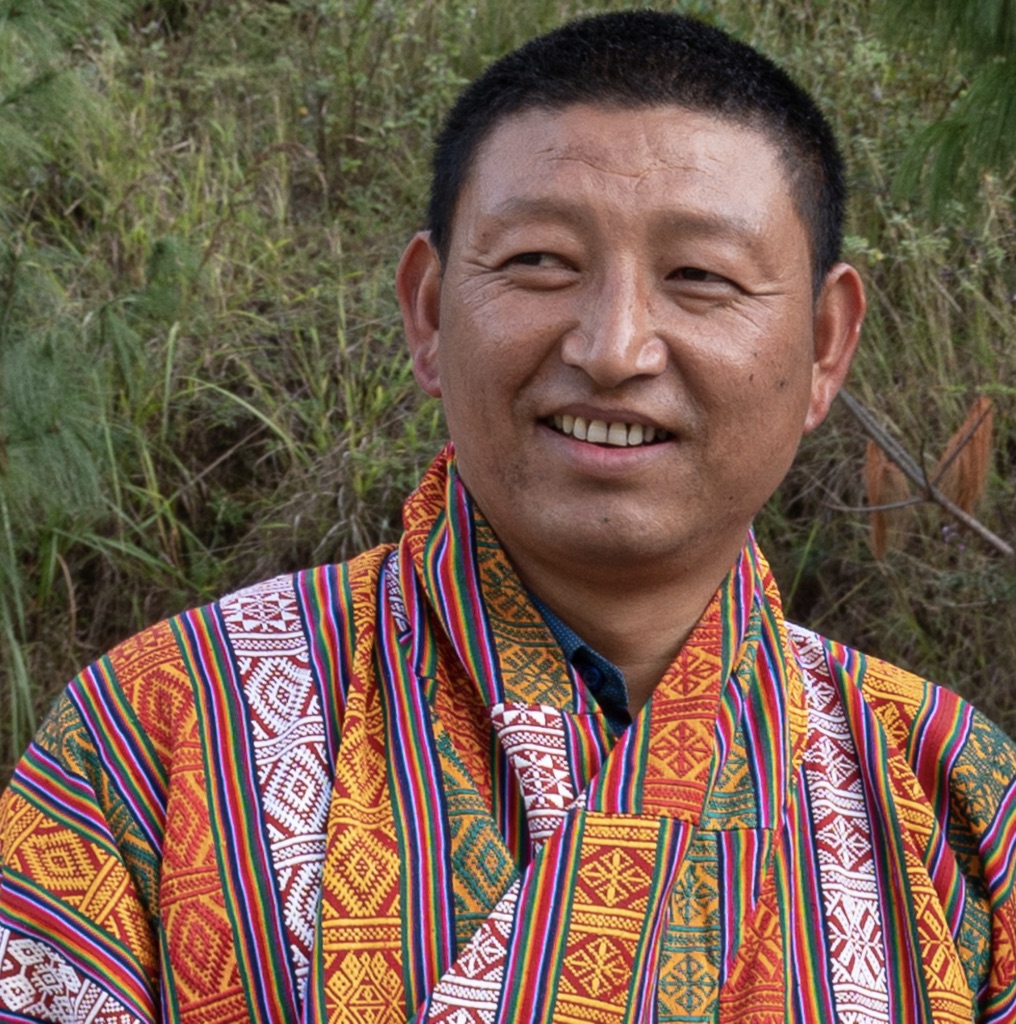
Yonten Phuntsho is one of our senior most guide. And well versed on his business. Initially, he conceded an impression of a man of a few words but I was in for surprise with the knowledge of his job, great sense of humour and congenial personality- simply one cannot judge a book by its cover. His unwavering focus, dedication, knowledge and passion runs deep for the love of his works. His aptly quote Barbara Kingsolver “I do my best work if I think about what it is I have to offer”.
From the outset, he knew what he wants to do in his life. Right after finishing his Class 12, he enrolled for guide course for culture initially then extended few more month to complete course on Trekking as well in 2008. After doing free lancing for a while, he joined Wind Horse Tours in 2010.
For most Bhutanese, appeals that mountainous terrains throw in for an out door adventures are native. In the case of Yonten, it was no exception. He easily gave in to the temptation of Mountain biking with its advent. He explored and lead tours in his bike but his allegiance is more inclined to off road biking trips that leads to quaint villages. To explore the unknown and love for nature, these attributes that he cultivated while trekking the alpine highlands and wilderness in remote corner of country was what prompt him to readily agree to embark on audacious Haa to Phuentsholing on mountain bike, overcoming challenges of carrying bike in tough terrains, untamed vegetations and unexplored areas.
Pema Namgay
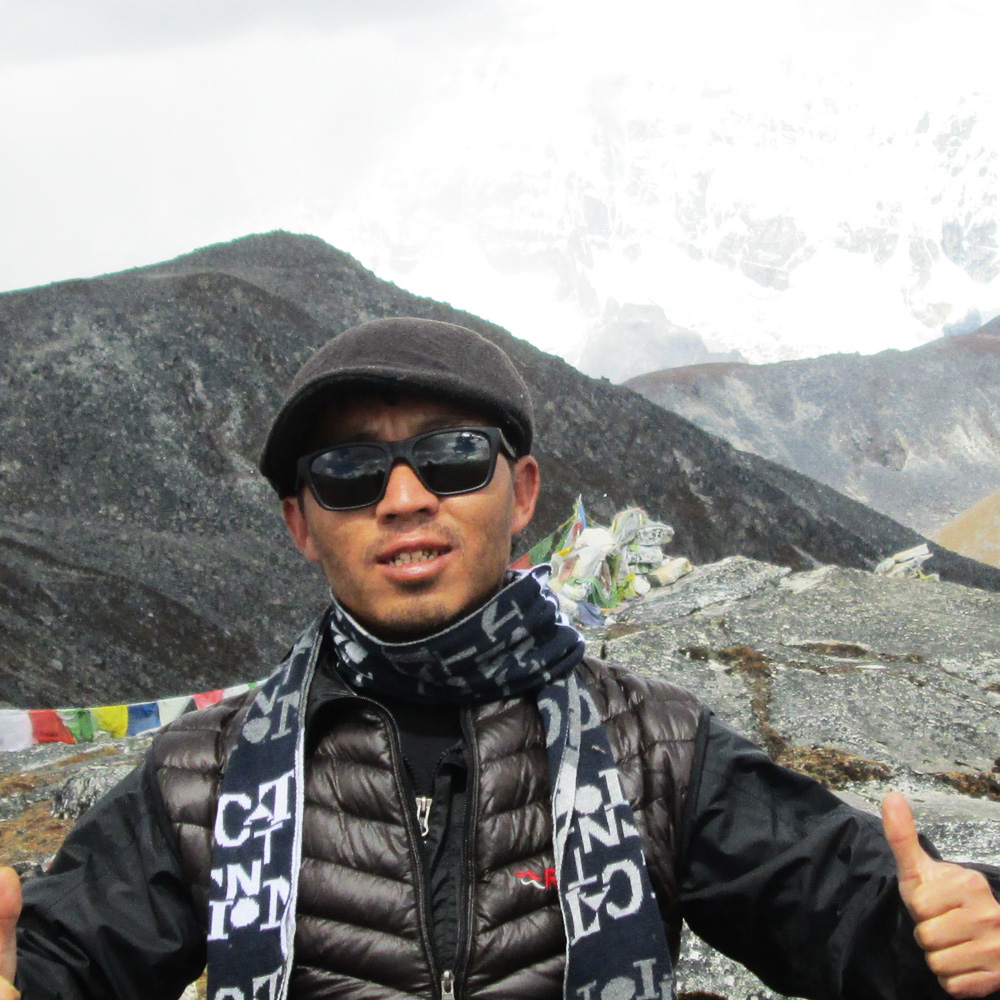
From the outset, Pema Namgyal knew what he wanted to do in life. He love to keep things simple. Right after finishing his Class 12 from school in Thimphu in 2004, he joined guiding course to aspire to be a guide. Initially he started as cultural guide but with time, he felt more connected with wilderness, he did course for trek in 2008.
After a fruitful experiences with other companies, he joined Wind Horse Tours in 2010. He has led many treks, and I seriously doubt, if there are any tourist trails that he hasn’t tread upon. One trek that stand out is challenging Snowman Trek, he comes highly recommended for this. In October, 2014 he successfully completed Snowman trek with 4 guests.
Pema Loves and he is good in archery and he has a loving family with two children
Sonam Loday
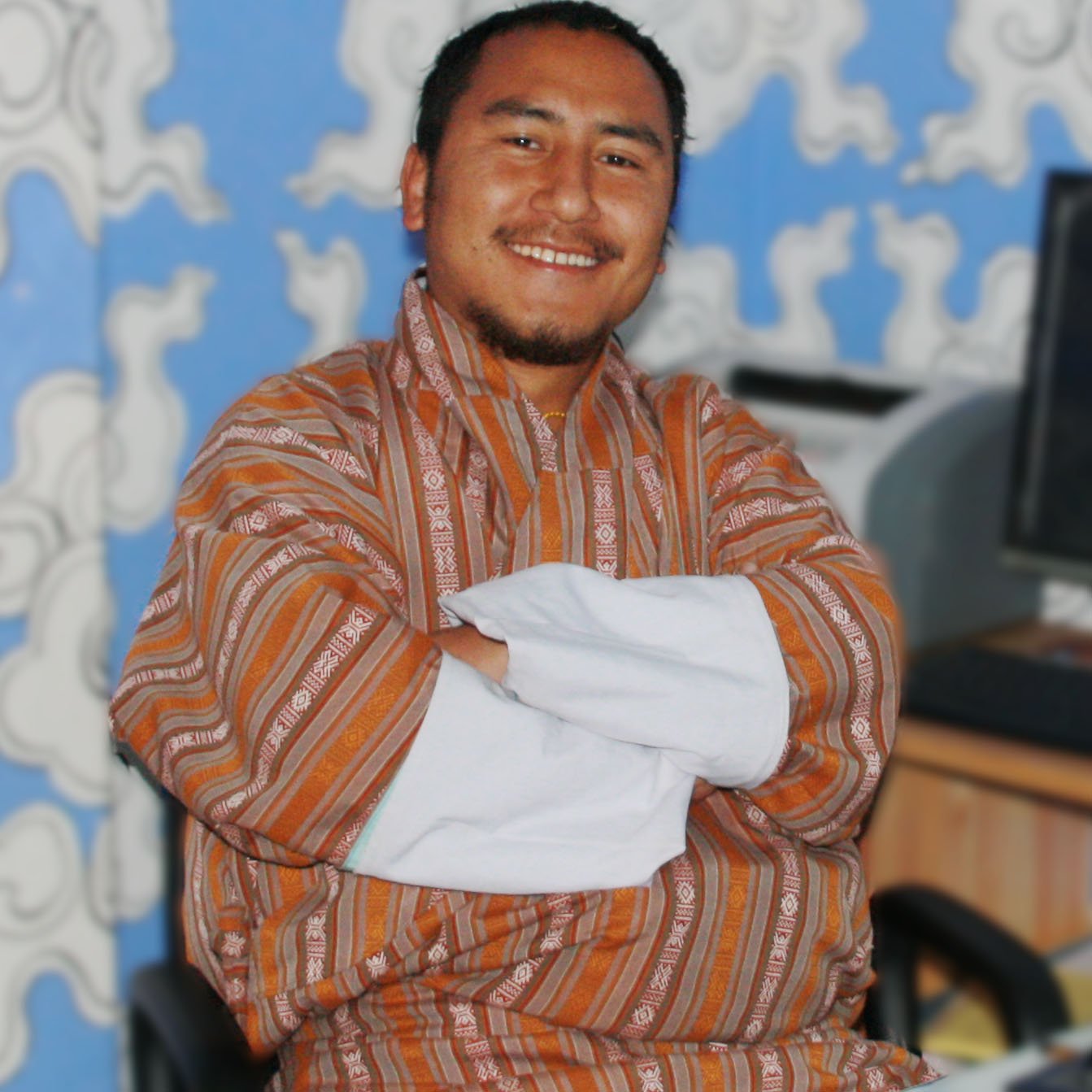
A good sense of humour is the currency that prevail everywhere regardless of the time or circumstances. An asset that that has potential to make even the ordinary trip into extraordinary. Sonam Loday has this traits in abundance. This is intrinsic and come as naturally as bees to the flower. He wears it in his sleeve in every tours that he conducts and this is one aspects that steal the limelight when we receive the feedbacks from the guests.
He finished his higher secondary school in 2005. Subsequently, he was at loose end trying to find meaning to his life and career, a chance meeting with a group of tourists resurrected his passion for the trade. He did his cultural guide course in 2005 and trekking in 2007. He burn the midnight oils to complete his senior guide course in 2008. He joined Wind Horse Tours in 2009 and has led countless tours with flair and his brand of humour.
Along with great sense of humour, he is well versed on both aspects cultural as well as trek. The Horse riding course refuelled his passion for horses to a new height in 2010. He is the coordinator and manager of Wind Horse Ranch and Riding Club – a low carbon footprint product. In 2017-18, he also helped start Wind Horse Ranch in Phobjikha (Gangtey).
When it comes to giving air to his interests and passion, he has varied propensities, it ranges from being cultural and trek guide to horse manager to his new found passion – mountain biking, his new best friend. On weekend, perhaps he will be one among the many guys to come across in Thimphu biking zone. And also among the few to volunteer first for audacious Haa to Phuentsholing Trip.
Namgay
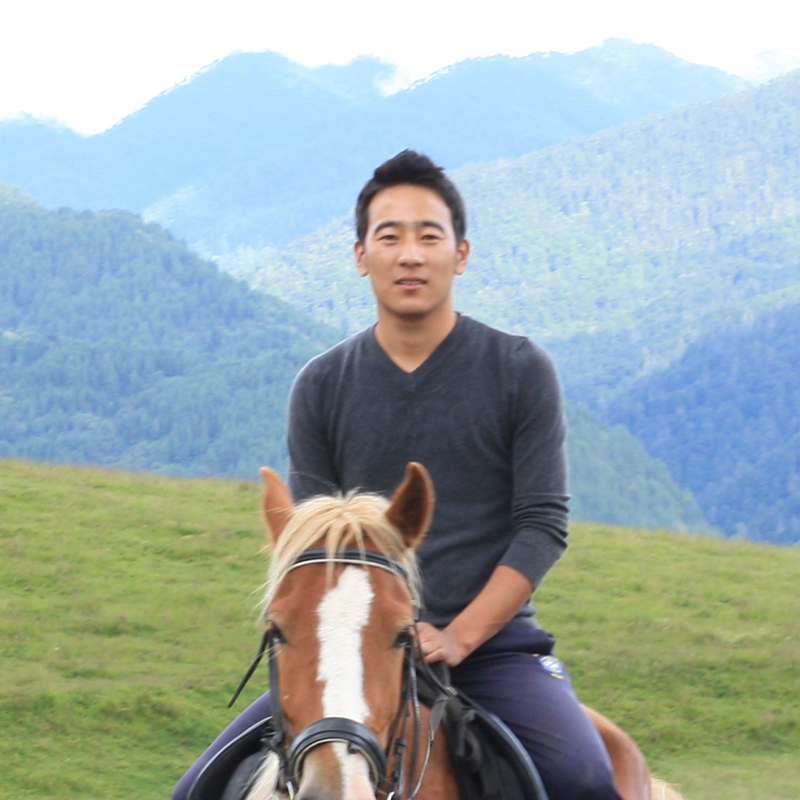
Guide – Culture, Trek & Nature
Growth in Tourism in Bhutan has also its share of impact on young minds. With tourists freely moving around, the curiosities to know them, talk to them holds ground firmly on young minds . Namgay is one among many youth whose imagination was captured by razzmatazz of tourism.
He has his career goal cut out, he could have easily opted for some comfortable desk jobs, after passing out in flying colours from prestigious St Joseph college Darjeeling in 2010 but he chose to pursue his dream, he loved to be in field, among the guests, so it was only matter of time to enroll for guiding course.
His first foray into job was in 2013 at Wind Horse Tours and still he is going great guns. Feed Backs from guests that he led are great testimonial to his dedication.
He prodigiously read books that open up new frontiers and interaction with guests coupled with sound command of English takes his outlook towards learning and experiences altogether to different height.
FAQs
- How difficult is the Jomolhari trek?
The Jomolhari trek is considered moderately challenging. It involves both uphill and downhill sections, as well as high-altitude terrain. A good level of fitness and some prior trekking experience is recommended.
- What is the best time for the Jomolhari trek?
The Jomolhari trek is best enjoyed during two prime seasons: Spring, stretching from late March to May, and Fall, spanning from late September to early November. During these periods, the weather is favorable, and the trekking experience is at its peak.
However, it’s important to note that the trek becomes challenging during other times of the year. In winter, from late November to the early part of March, the trail is snow-covered, making it less suitable for trekking. In summer, between June and early September, sporadic rainfall occurs, but the high-altitude areas come alive with vibrant blossoms, creating a unique and picturesque atmosphere.
- What is the accommodation like during the trek?
The accommodation during the trek consists of tents set up at designated campsites. These tents provide basic facilities and include sleeping arrangements. Meals are prepared by the trekking crew. Additionally, there are essential facilities like a simple toilet tent, a kitchen tent, and a dining tent to ensure a comfortable trekking experience.
- Is altitude sickness a concern on the Jomolhari trek?
Altitude sickness can indeed be a concern during the Jomolhari trek due to the high altitudes encountered. However, rest assured that our itinerary is well-designed to allow for proper acclimatization. The gradual nature of the trek aids in adapting to the altitude, minimizing risks. Additionally, our experienced Guides are trained in mountain medicine and first aid, equipped with portable altitude chambers. It’s worth noting that Bhutan now offers helicopter services for medical emergencies, further enhancing safety measures. Your well-being is our priority throughout the trek.
- What should I pack for the Jomolhari trek ?
For the Jomolhari trek, it’s essential to pack suitable trekking gear, warm clothing, and sturdy hiking boots. Your essentials should include a high-quality day pack, sunscreen, sunglasses, a first aid kit, and any personal medications you may need. Additionally, bring a water bottle or camelpack for hydration and water purifying tablets for emergencies. A detailed packing list will be provided once you’re enrolled in our trip, ensuring you’re well-prepared for the adventure ahead.
- Can you describe a typical trekking day ?
A typical trekking day starts with a quiet wake-up call from the crew, delivering a cup of tea or coffee to your tent. After a leisurely morning routine, a hot breakfast awaits. Following that, you set off with your guide while the camp crew breaks down the site and follows behind. Lunch, transported in insulated pots, is served on the trail or at a campsite if it’s a shorter day.
Upon arriving at the next camp, the staff swiftly sets up tents and serves a hot drink. Dinner, a three-course meal, is enjoyed in the mess tent. As night falls and temperatures drop, everyone cozies up in sleeping bags. A hot-water bag is often provided for extra warmth and comfort. This simple rhythm encapsulates the essence of each fulfilling day on the trek.
Overview
 Accommodation
Best available tourists standard hotels, where available. We update our trekking equipment and gear regularly and so you will receive the best gears.
Accommodation
Best available tourists standard hotels, where available. We update our trekking equipment and gear regularly and so you will receive the best gears. Meals
All meals plus evening tea. All beverages included during the trek.
Meals
All meals plus evening tea. All beverages included during the trek.
 Route
Paro - Punakha- Thimphu- Trek to Thongduzam, Soithangthangkha, Jangothang - Dumzo (Yaksa), Thongbu Shong and end trek in Shana - Paro (Takstang hike).
Route
Paro - Punakha- Thimphu- Trek to Thongduzam, Soithangthangkha, Jangothang - Dumzo (Yaksa), Thongbu Shong and end trek in Shana - Paro (Takstang hike).
 Max Group Size
Max. 9 members
Max Group Size
Max. 9 members
 Best Seasons
The ideal seasons for the Jomolhari trek are Spring (late March to May) and Fall (late September to early November), offering the best weather and trekking conditions. In Winter (late November to early March), heavy snow is prevalent, and Summer (June to early September) experiences occasional rain, yet showcases stunning high-altitude blossoms.
Best Seasons
The ideal seasons for the Jomolhari trek are Spring (late March to May) and Fall (late September to early November), offering the best weather and trekking conditions. In Winter (late November to early March), heavy snow is prevalent, and Summer (June to early September) experiences occasional rain, yet showcases stunning high-altitude blossoms.
 Best Months
April, May, October, November
Best Months
April, May, October, November  Good Months
March, September
Good Months
March, September  Lean Months
June, July, August
Lean Months
June, July, August  Not Recommended Months
January, February, December
Not Recommended Months
January, February, December Quick Inquiry
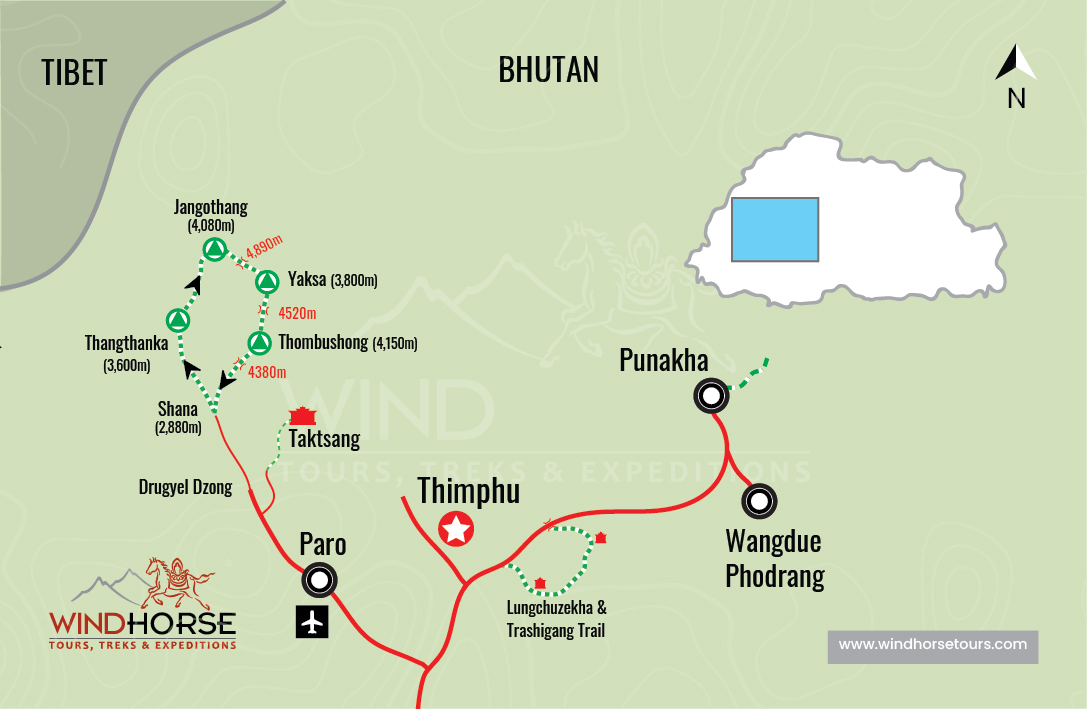
Request detailed -Inquire about trip
We’re happy to provide a detailed itinerary to those with genuine interest. To ensure the request is legitimate, we kindly ask that you complete the required form in full before we share the information
Request detailed -Inquire about trip
We’re happy to provide a detailed itinerary to those with genuine interest. To ensure the request is legitimate, we kindly ask that you complete the required form in full before we share the information
You might also like...
The Druk Path Trek is a classic high-altitude route in Bhutan, following part of the ancient Trans Bhutan Trail...
Jomolhari Laya Gasa Trek – A Journey Through Bhutan’s Wild and Beautiful Highlands. Jomolhari Laya Gasa Trek, also spelled...
Colorful festival. Remote villages Meet the Brokpa tribe Trekking off the beaten trail National Parks Cultural monuments Takstang (Tiger's...


 Overview
Overview Costs
Costs Included
Included Itinerary
Itinerary Trip Review
Trip Review Tour Leader
Tour Leader Trip Photos
Trip Photos Activities Included
Activities Included
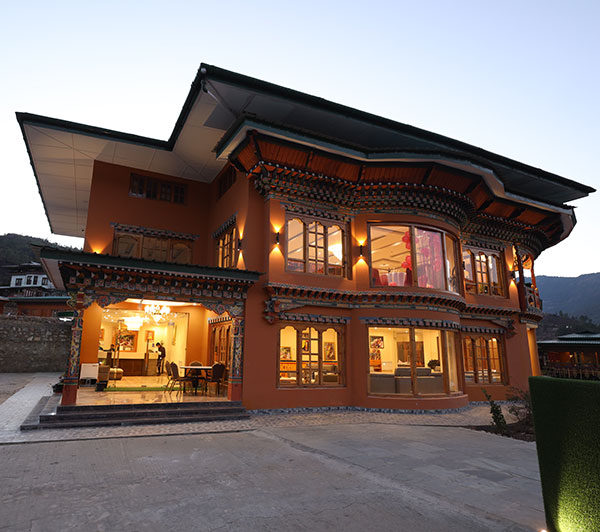
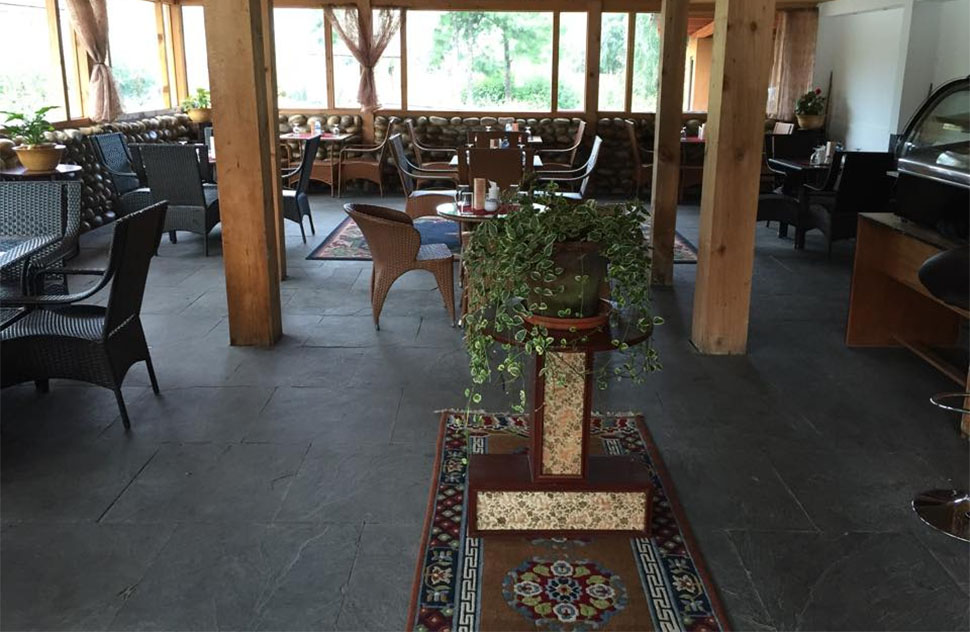
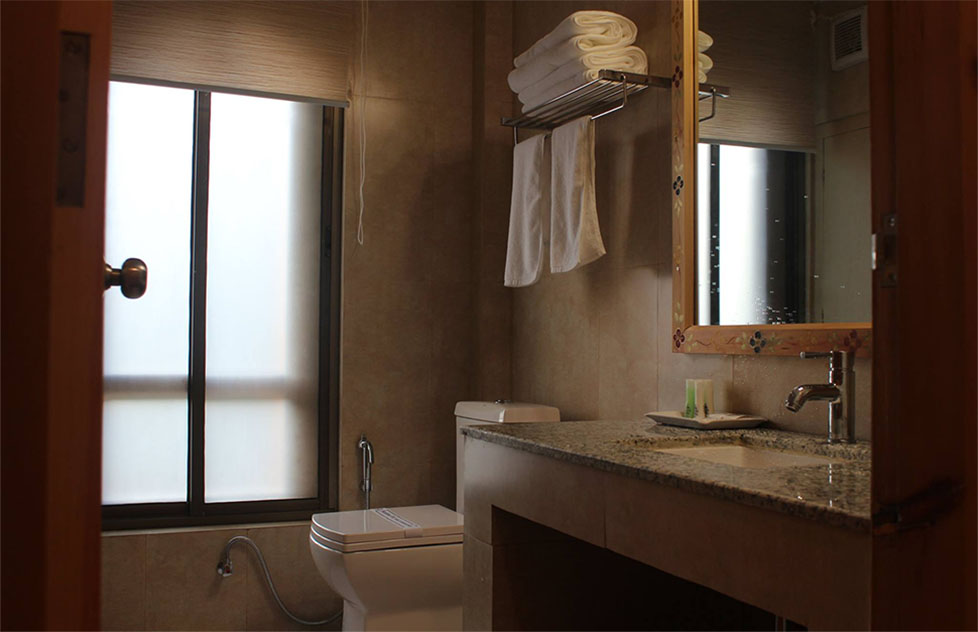
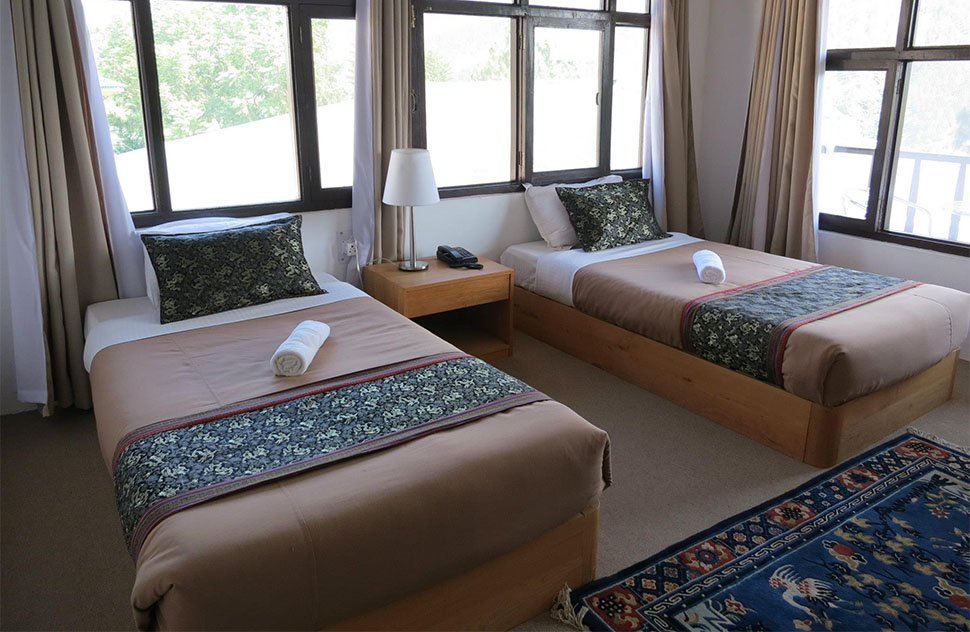
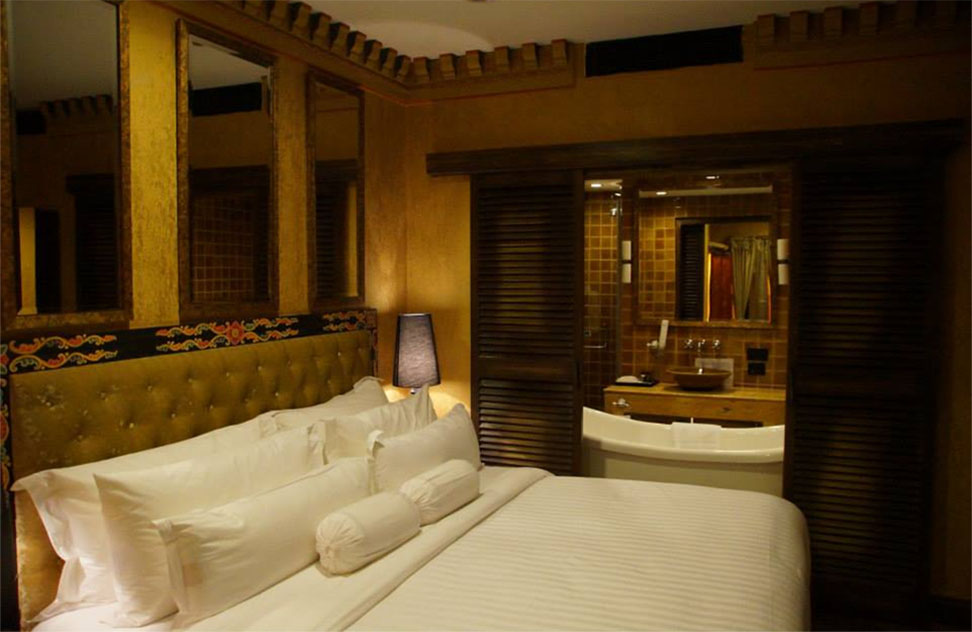
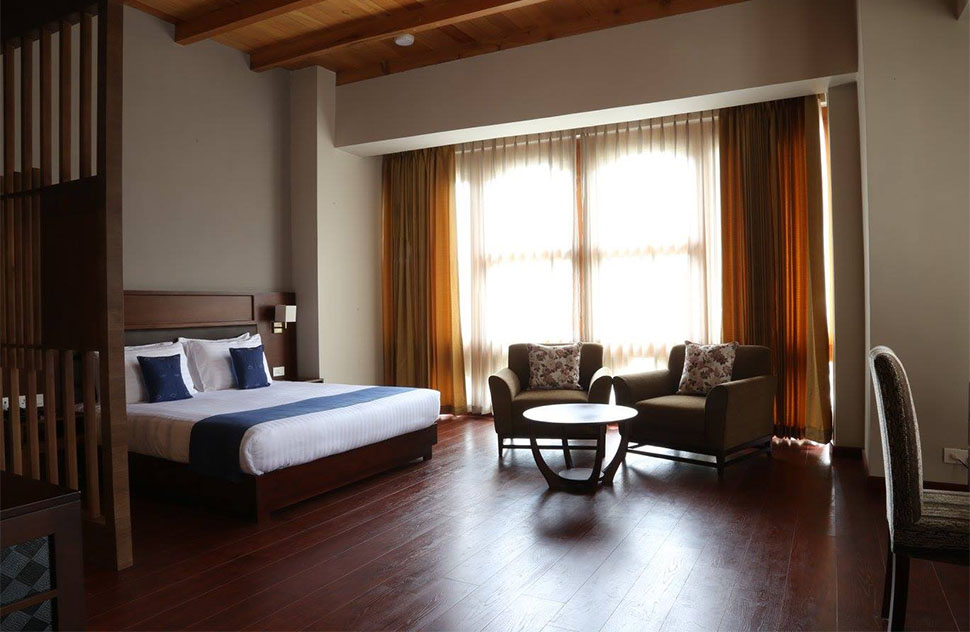
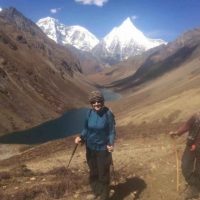
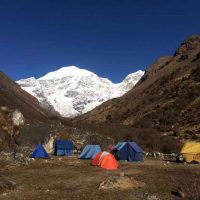
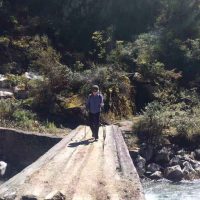
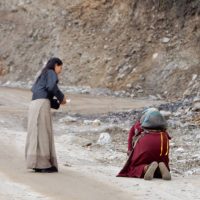
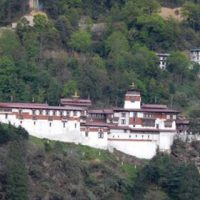
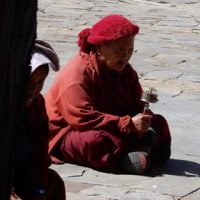
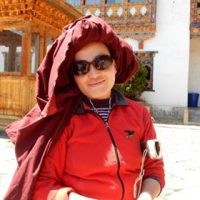
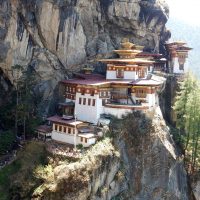
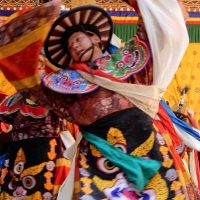
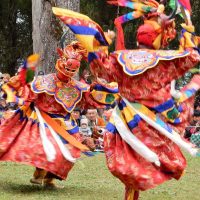
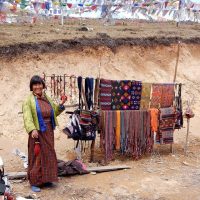
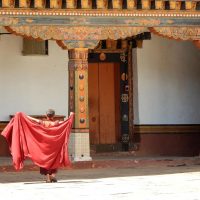
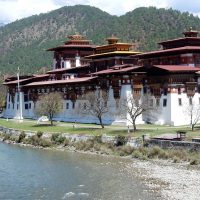
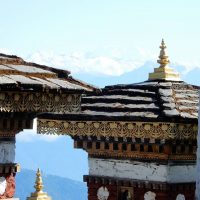
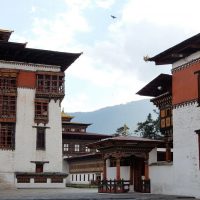
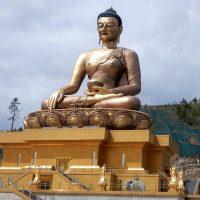
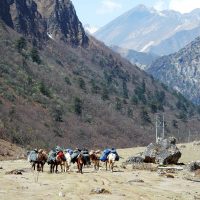
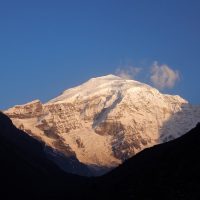
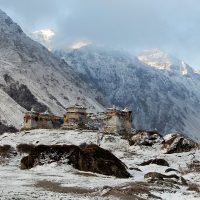
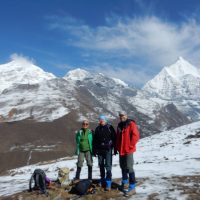
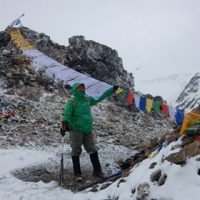
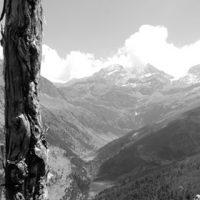
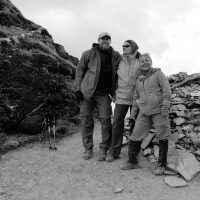
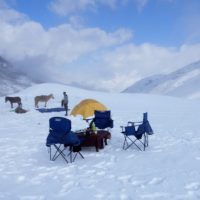
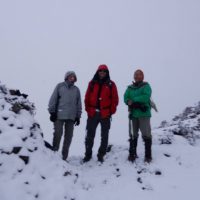
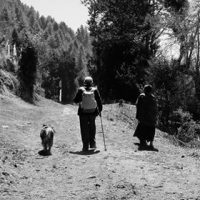
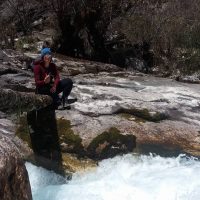
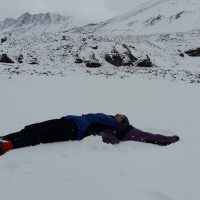
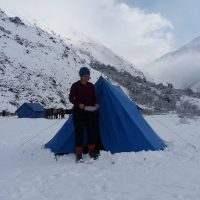
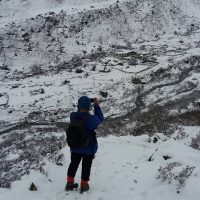





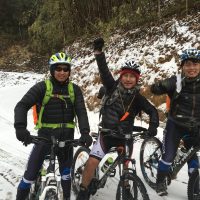
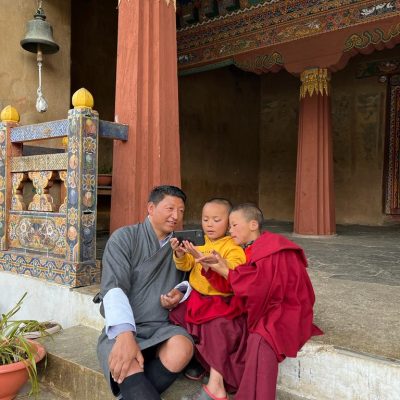
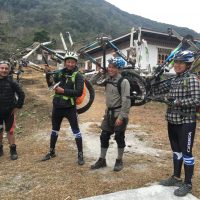
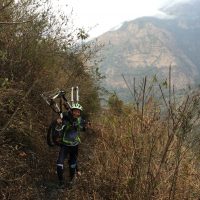
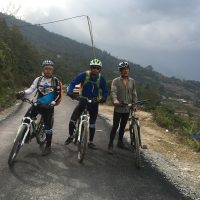
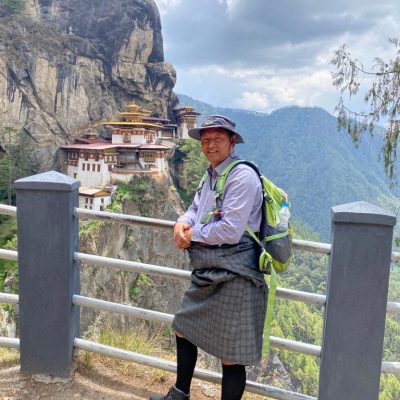

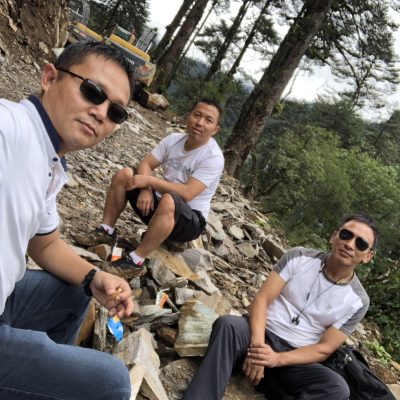
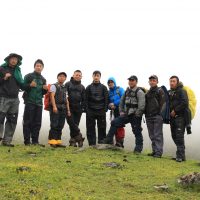
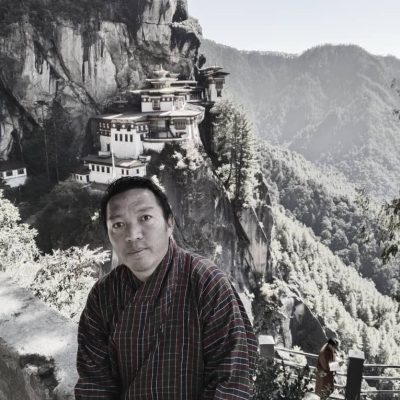

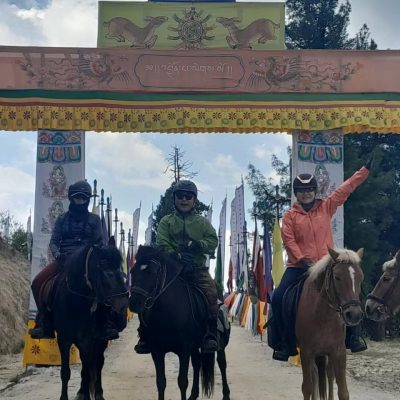
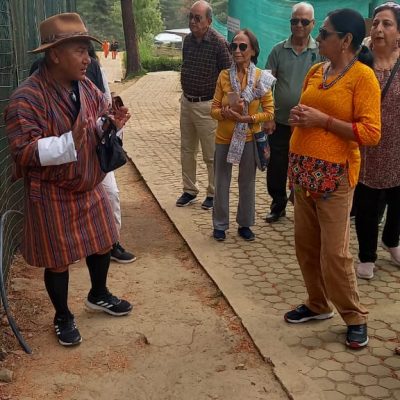
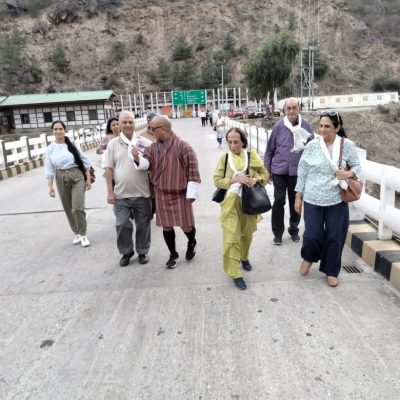
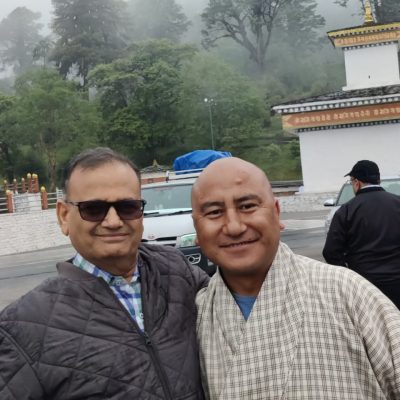
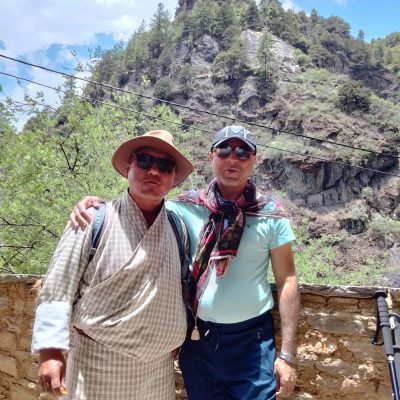
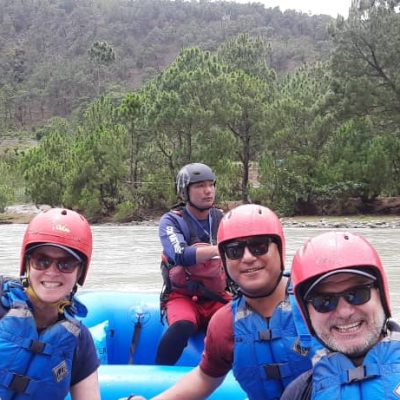
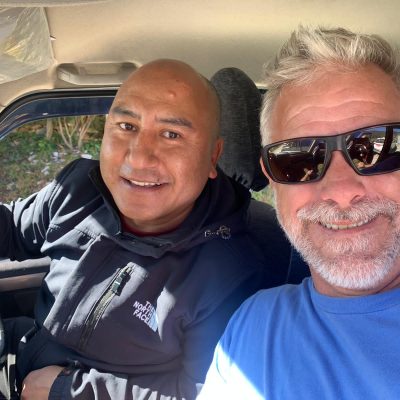
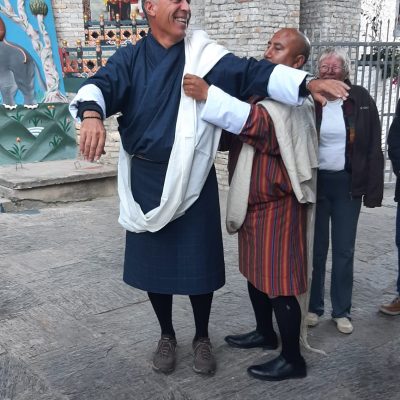
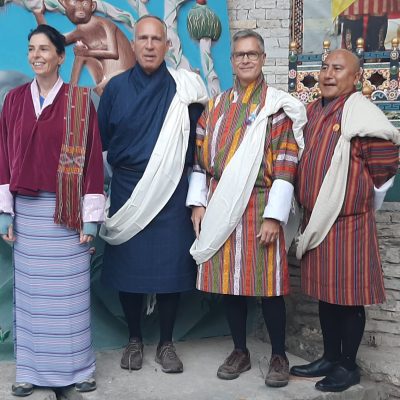
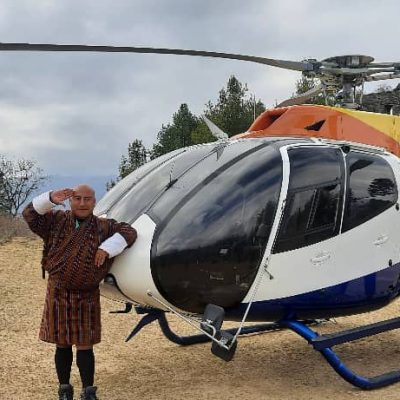
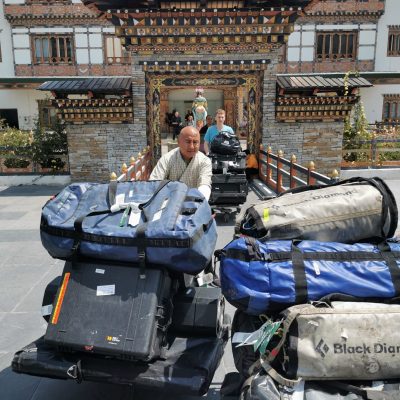
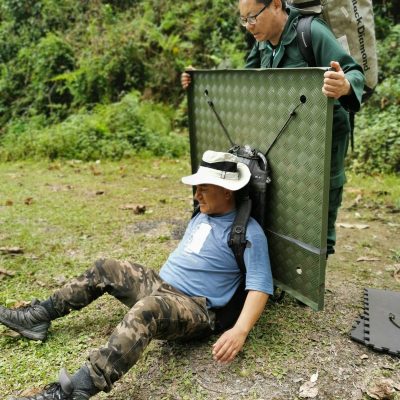
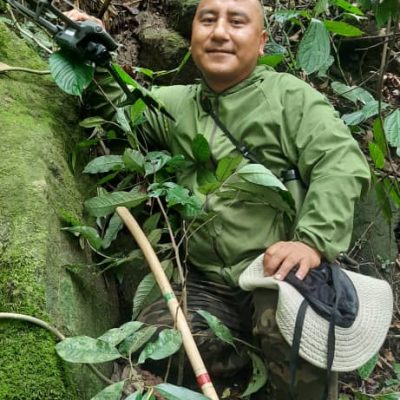
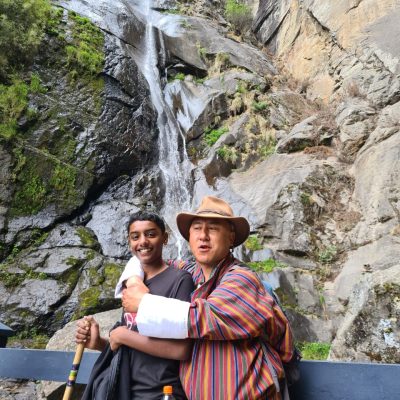
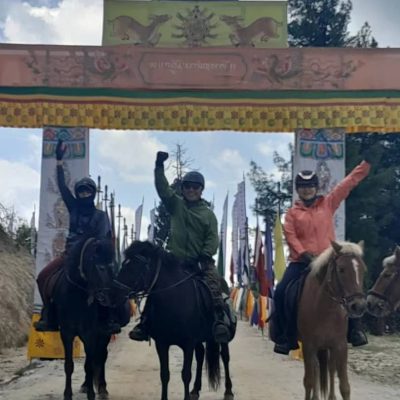
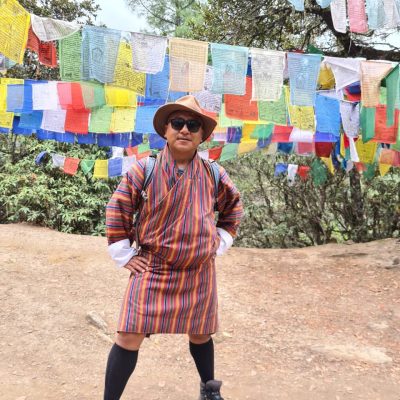
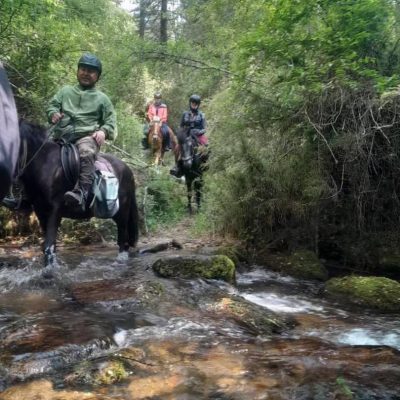
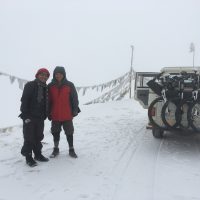
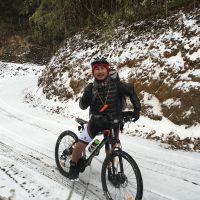
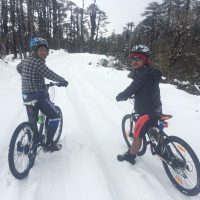
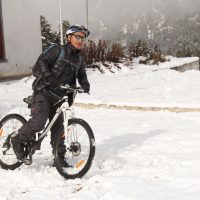

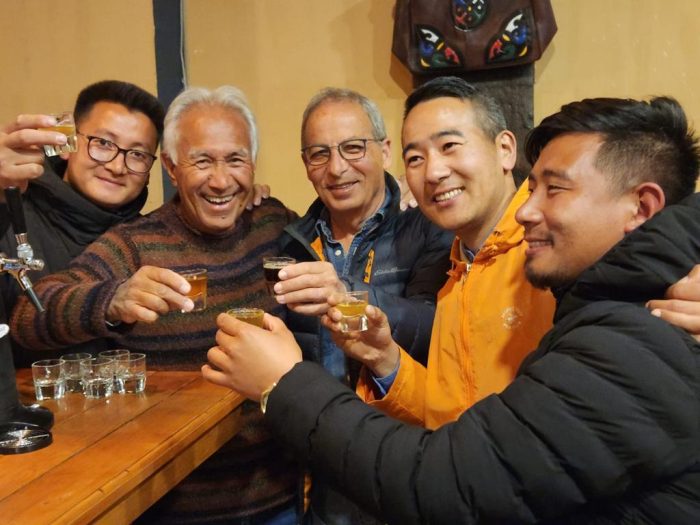
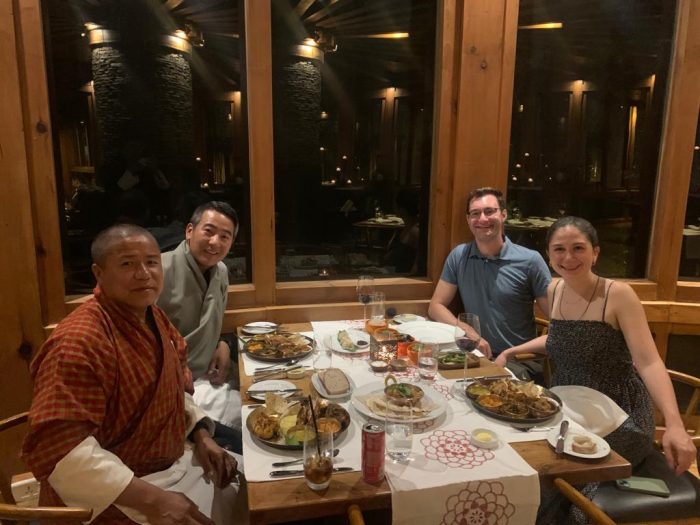
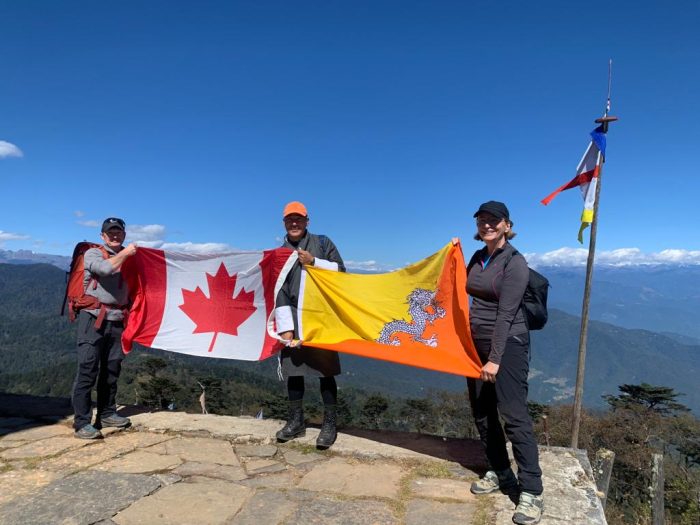
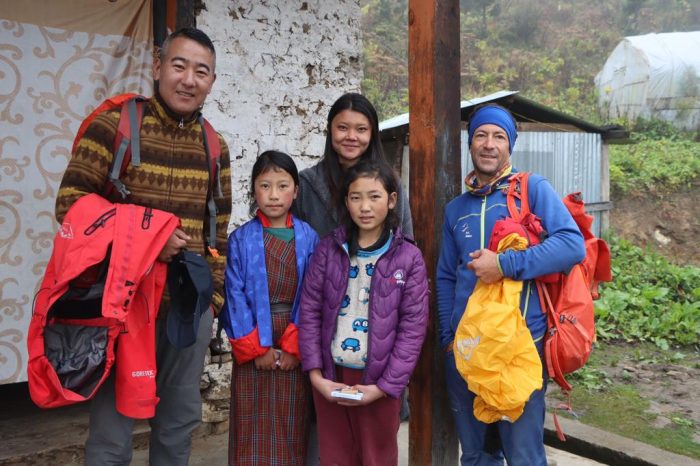
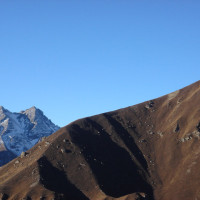
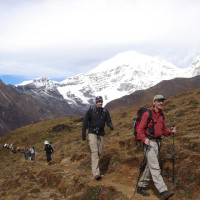
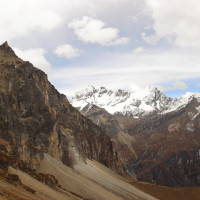
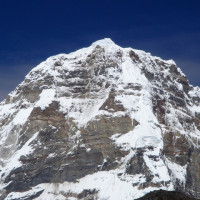
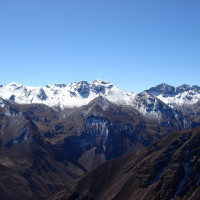
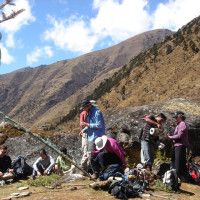
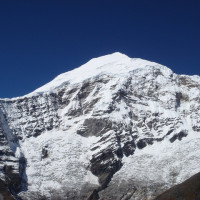
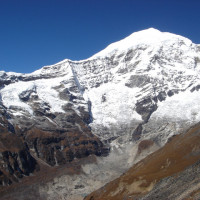
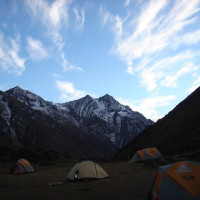
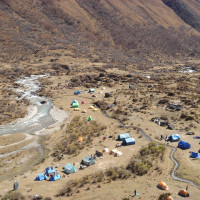
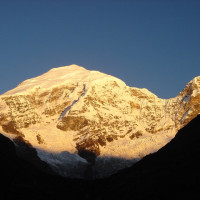
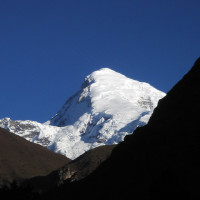
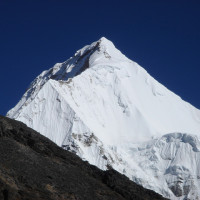
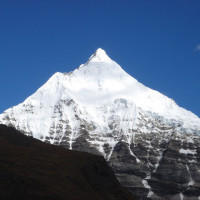
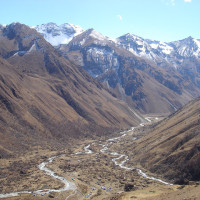
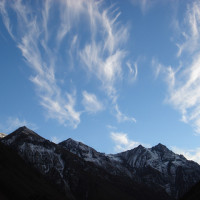
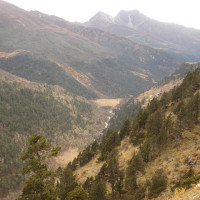
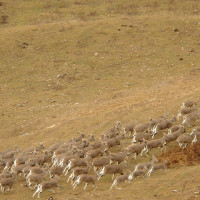
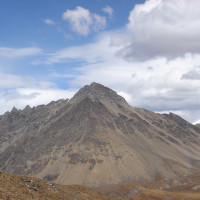
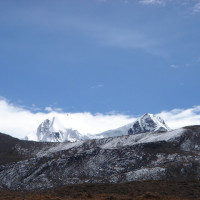
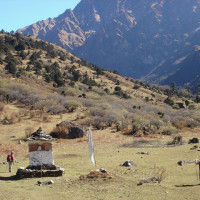
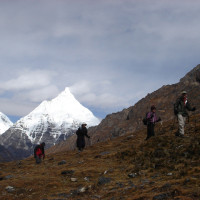
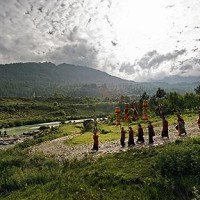
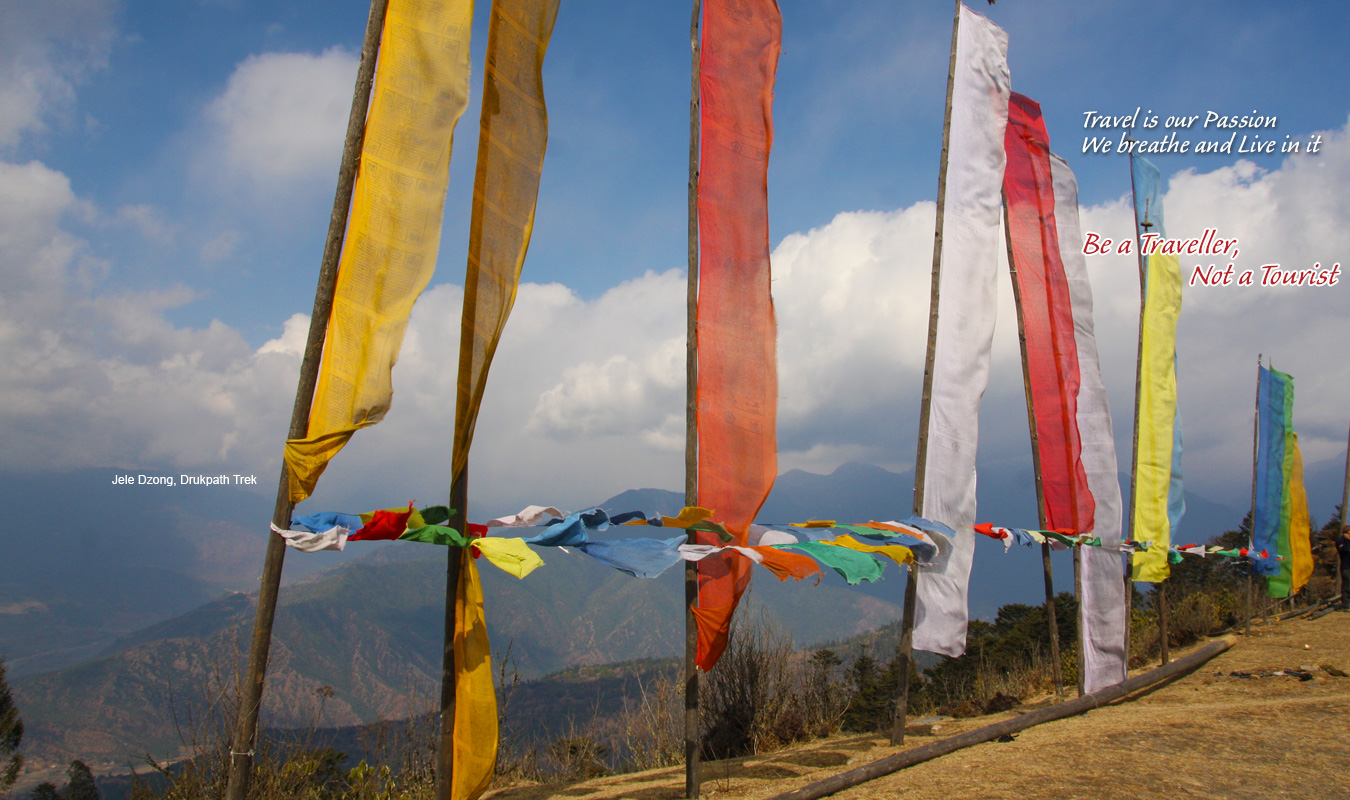

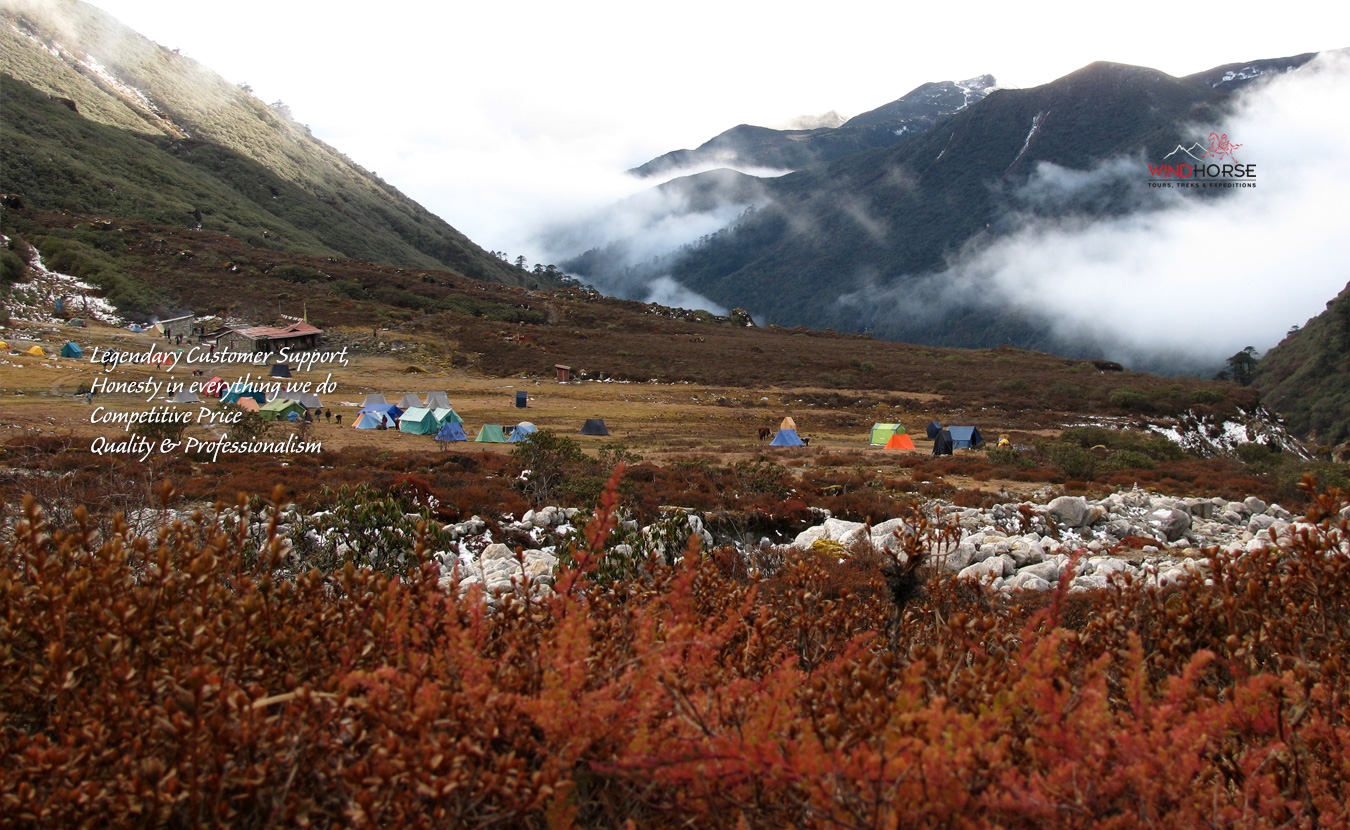
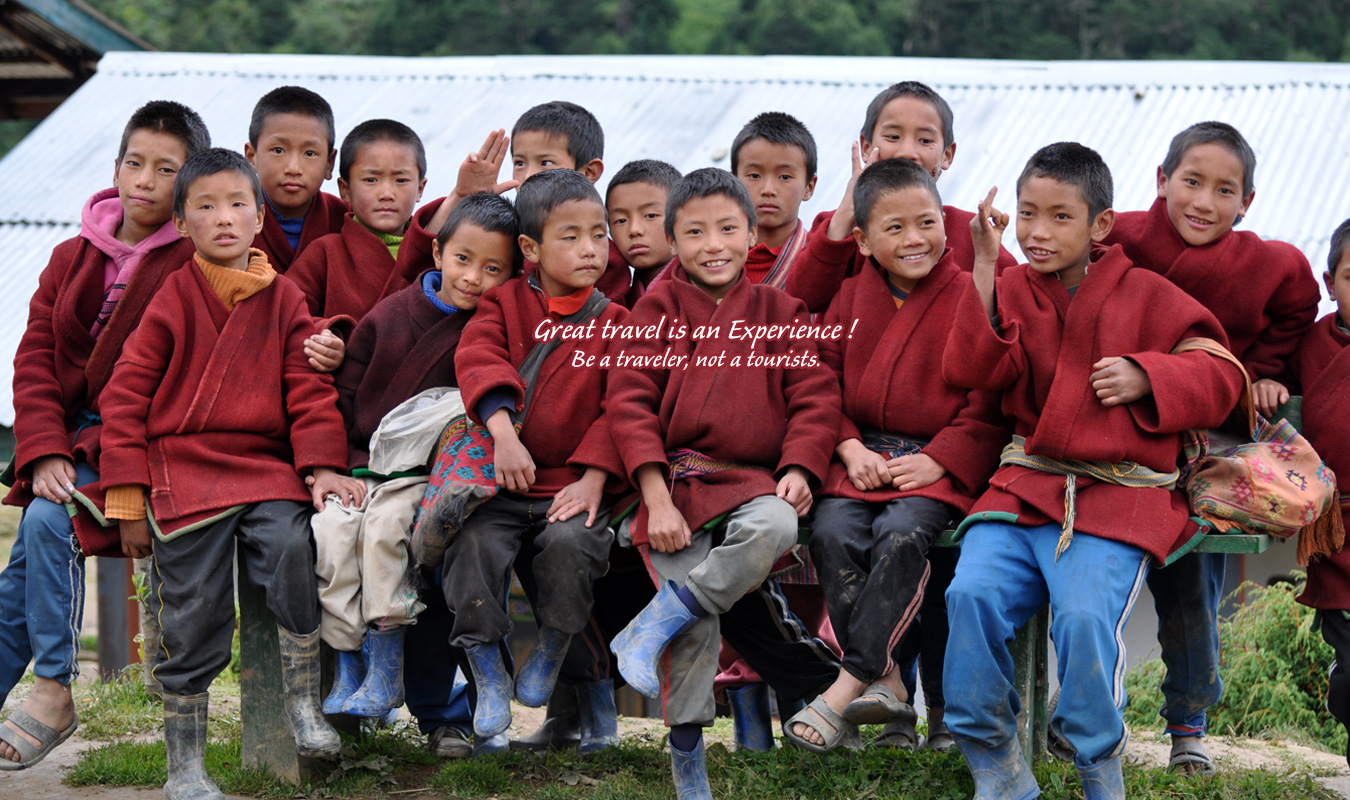
My son and I just returned from a truly wonderful 2-week trip (1-week cultural tour, 1-week trek) to Bhutan with Windhorse. The firm is well-established and very professional, and our trip was well-planned from beginning to end. Our kind and knowledgeable guide Pema, excellent driver Kinzang, and hard-working cooks and horsemen took great care of us. Pema would always say, “You’re satisfaction is my satisfaction” and he genuinely meant it. Our Himalayan trek took us far away from the modern world and offered the most beautiful scenery I’ve ever seen. I highly recommend Windhorse and can’t wait to return to explore more of Bhutan with them.